All Neighborhoods
search
Brooklyn

Bath Beach
Learn More
Bath Beach, situated in southwestern Brooklyn, is a vibrant neighborhood rich in history and cultural diversity. Nestled along the waterfront, it offers residents a unique blend of urban living and coastal charm. Originally a resort destination in the late 19th century, Bath Beach has evolved into a thriving residential area with a mix of single-family homes, apartment buildings, and small businesses.
One of the defining features of Bath Beach is its strong sense of community. Residents often gather at local parks like Bath Beach Park and Bensonhurst Park for recreational activities and socializing. The neighborhood boasts a variety of eateries, reflecting its diverse population, with Italian, Chinese, Russian, and Middle Eastern cuisines among the many options available.
Transportation in Bath Beach is convenient, with access to several subway lines and bus routes, making it easy to navigate the rest of Brooklyn and beyond. Additionally, the nearby Belt Parkway provides quick access to Manhattan and other parts of New York City for commuters.
Families are drawn to Bath Beach for its relatively affordable housing options and access to quality schools. The area is home to several public and private schools, as well as religious institutions serving various faith communities.
While Bath Beach has seen some changes over the years, it has retained its unique character and continues to attract new residents looking for a welcoming community with a diverse array of amenities.

Bay Ridge
Learn More
Bay Ridge, located in the southwest corner of Brooklyn, New York, is a vibrant and diverse neighborhood with a rich history and strong sense of community. Bordered by the waterfront on one side and sprawling parks on the other, Bay Ridge offers residents a unique blend of urban convenience and suburban charm.
One of the defining features of Bay Ridge is its eclectic mix of cultures and traditions. Historically a haven for Norwegian immigrants, the neighborhood still maintains a strong Scandinavian presence, evident in its annual Norwegian Constitution Day Parade and charming Bay Ridge Norwegian Christian Home. However, Bay Ridge has also become home to a diverse array of ethnicities, including Italian, Irish, Arab, Greek, and Chinese communities, each contributing to the area's cultural tapestry.
The neighborhood boasts a variety of architectural styles, ranging from historic brownstones and row houses to modern apartment buildings and waterfront mansions. Shore Road Park and Owl's Head Park offer stunning views of the New York Harbor and the Verrazano-Narrows Bridge, providing residents with ample green space for recreation and relaxation.
Bay Ridge is renowned for its bustling commercial thoroughfares, such as Third Avenue and Fifth Avenue, lined with an array of restaurants, cafes, bars, boutiques, and specialty shops. From traditional Italian bakeries to trendy gastropubs, there's something to satisfy every palate.
Transportation options abound in Bay Ridge, with multiple subway lines, express buses, and ferry service connecting residents to Manhattan and other parts of Brooklyn. With its strong sense of community, diverse population, scenic views, and convenient amenities, Bay Ridge truly offers the best of both worlds for those seeking a dynamic yet welcoming place to call home.

Bedford-Stuyvesant
Learn More
Bedford-Stuyvesant, commonly referred to as Bed-Stuy, is a vibrant and culturally diverse neighborhood located in the central part of Brooklyn, New York City. Steeped in history and rich in character, Bed-Stuy has undergone significant changes over the years, evolving into a thriving community that blends old-world charm with modern amenities.
Known for its distinctive brownstone row houses, tree-lined streets, and friendly atmosphere, Bed-Stuy is a favorite destination for both long-time residents and newcomers alike. The neighborhood boasts a strong sense of community, with residents often engaging in local events and initiatives that promote unity and inclusivity.
Over the years, the area has experienced significant revitalization, attracting young professionals and families looking for a more affordable alternative to Manhattan living. Alongside its historic architecture, new developments and trendy businesses have emerged, bringing a mix of hip cafes, boutique shops, and craft breweries to the neighborhood.
Parks and green spaces provide residents with places to relax and enjoy outdoor activities. Herbert Von King Park, in particular, is a popular spot for picnics, sports, and community gatherings.
However, gentrification and rising property prices have presented challenges for some longtime residents, leading to concerns about affordability and preserving the neighborhood's unique identity. Community organizations and activists are actively working to address these issues and protect the interests of all residents.
In conclusion, Bed-Stuy is a captivating neighborhood that harmoniously blends its historical roots with modern influences. Its diverse community, cultural vibrancy, and strong sense of belonging make it a special place for people from all walks of life.
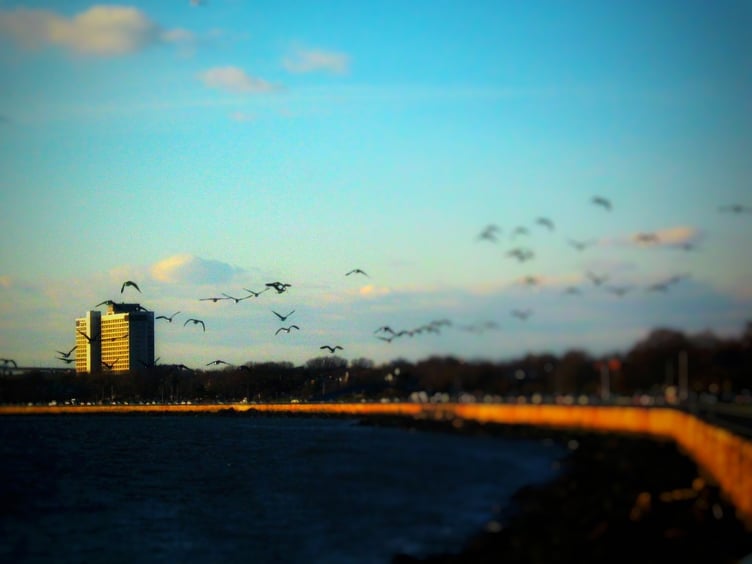
Bensonhurst
Learn More
Bensonhurst, nestled in the southwestern part of Brooklyn, New York City, boasts a rich cultural tapestry, historical significance, and vibrant community life. Known for its strong Italian-American presence, Bensonhurst has evolved into a diverse neighborhood, blending various ethnicities, cultures, and traditions.
The streets of Bensonhurst are lined with an eclectic mix of residential buildings, ranging from classic brownstones to modern apartment complexes. The neighborhood exudes a sense of warmth and charm, with tree-lined avenues, quaint parks, and bustling commercial strips.
One of Bensonhurst's defining features is its culinary scene. From traditional Italian eateries serving up mouthwatering pasta dishes to hole-in-the-wall dumpling spots, the neighborhood offers a culinary adventure for every palate. Locals and visitors alike flock to renowned bakeries for fresh cannoli and sfogliatelle, adding a touch of sweetness to their day.
Bensonhurst also boasts a strong sense of community, with residents actively participating in local events, festivals, and gatherings. The annual Festa di Santa Rosalia celebrates the neighborhood's Italian heritage with lively parades, music, and food stalls, bringing people together in joyous celebration.
Education is highly valued in Bensonhurst, with top-rated schools serving the diverse student population. Families take pride in their children's academic achievements and actively support their educational endeavors.
Transportation in Bensonhurst is convenient, with access to multiple subway lines and bus routes, facilitating easy travel to other parts of the city. Additionally, the neighborhood's proximity to major highways provides residents with quick access to neighboring boroughs and beyond.
Overall, Bensonhurst offers a unique blend of history, culture, and community spirit, making it a beloved enclave in the heart of Brooklyn.

Bergen Beach
Learn More
Bergen Beach, located in the southeastern part of Brooklyn, New York City, offers a tranquil suburban atmosphere within the bustling metropolis. Characterized by tree-lined streets, spacious single-family homes, and well-maintained lawns, Bergen Beach is a haven for families seeking a peaceful residential enclave.
The neighborhood boasts a strong sense of community, with residents often gathering at local parks like the beautifully landscaped and expansive Roy Wilkins Park or the waterfront Charles Memorial Park, which offers stunning views of Jamaica Bay. Recreation opportunities abound, with facilities for sports such as basketball, tennis, and soccer, ensuring there's something for everyone.
Bergen Beach is also known for its excellent schools, making it an attractive option for families with children. Public transportation options include bus routes and nearby subway stations, providing easy access to the rest of Brooklyn and Manhattan.
The area features a variety of dining options ranging from family-owned pizzerias to trendy cafes, satisfying diverse culinary preferences. Additionally, retail establishments and supermarkets cater to residents' everyday needs, enhancing the neighborhood's convenience.
While Bergen Beach maintains its residential charm, it's also undergoing subtle changes, with some older properties being renovated and new developments adding to the housing stock. Despite this evolution, the neighborhood remains committed to preserving its peaceful ambiance and close-knit community feel, making it a desirable place to call home in the heart of New York City.
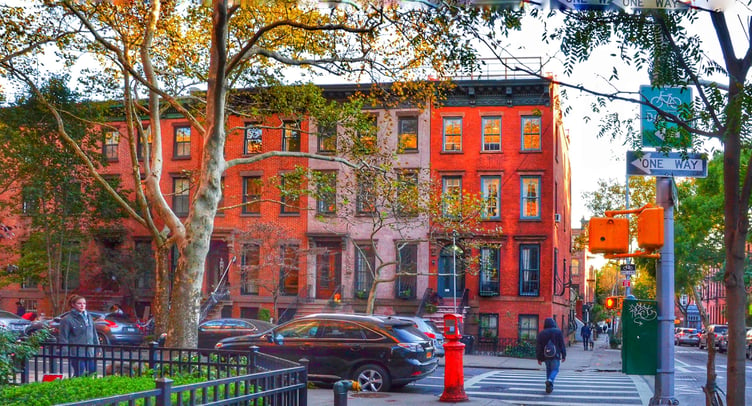
Boerum Hill
Learn More
Boerum Hill is a vibrant and charming neighborhood nestled in the heart of Brooklyn, New York. With tree-lined streets, historic brownstones, and a mix of old-world charm and modern amenities, Boerum Hill exudes a unique character that attracts residents and visitors alike.
One of the defining features of Boerum Hill is its architecture. The neighborhood is adorned with rows of beautiful brownstone and brick townhouses dating back to the 19th century. Many of these homes have been lovingly restored, preserving the area's historical charm and creating a picturesque streetscape. Alongside the residential streets, you'll find trendy boutiques, art galleries, and a diverse array of restaurants, cafes, and bars. The local food scene is particularly noteworthy, offering everything from artisanal coffee to innovative fusion cuisine.
Boerum Hill is also a cultural hub. The neighborhood is home to the acclaimed Brooklyn Academy of Music (BAM), a renowned performing arts venue hosting theater, dance, music, and film events throughout the year. Additionally, the area's thriving artistic community is evident in the numerous galleries and creative spaces that showcase local talent.
Residents of Boerum Hill enjoy convenient access to nearby neighborhoods, including Cobble Hill, Carroll Gardens, and Downtown Brooklyn. The Barclays Center, a major sports and entertainment arena, is just a short walk away, hosting concerts, sports events, and other entertainment options.
Public transportation options are excellent, with multiple subway lines serving the area, making it easy to travel to other parts of Brooklyn or Manhattan. Despite its central location, Boerum Hill maintains a sense of tranquility and community, providing a peaceful retreat from the bustling city.
In conclusion, Boerum Hill is a gem within Brooklyn, offering a delightful blend of history, culture, and modern living. Its warm and inviting atmosphere, coupled with its convenient location, makes it a sought-after destination for individuals and families seeking a quintessential Brooklyn experience.

Borough Park
Learn More
Borough Park, located in the southwestern part of Brooklyn, New York City, is a vibrant neighborhood known for its diverse population, strong sense of community, and rich cultural heritage. Primarily residential, Borough Park is renowned for its large Orthodox Jewish community, making it one of the largest concentrations of Orthodox Jews outside Israel.
One of the defining features of Borough Park is its bustling commercial district along 13th Avenue, which boasts a plethora of kosher restaurants, bakeries, supermarkets, and specialty shops catering to the dietary needs and cultural preferences of the local Jewish community. The neighborhood also features a variety of housing options, ranging from pre-war apartment buildings to single-family homes, many of which have been passed down through generations.
Community life thrives in Borough Park, with numerous synagogues, yeshivas, and religious institutions serving as focal points for social gatherings, religious observance, and education. The neighborhood hosts a range of cultural events, including holiday celebrations, parades, and street fairs, which contribute to its vibrant atmosphere.
In addition to its strong Jewish identity, Borough Park is also home to a diverse mix of other ethnicities, including Hispanic, Asian, and Middle Eastern communities, lending to its eclectic character. The neighborhood is well-connected by public transportation, including several subway lines and bus routes, providing easy access to other parts of Brooklyn and Manhattan.
Overall, Borough Park is a dynamic and tightly-knit community where tradition and modernity coexist, offering residents a unique and vibrant living experience.
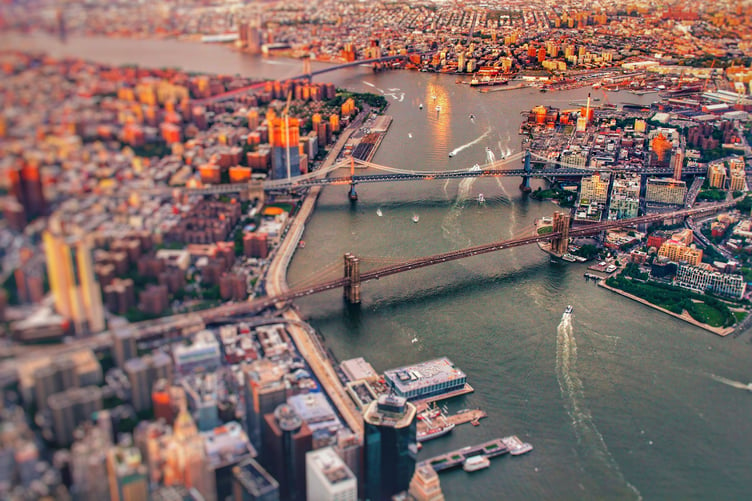
Brooklyn
Learn More
Brooklyn, one of New York City's five boroughs, offers a dynamic tapestry of neighborhoods, each with its own distinct personality and charm. From the historic brownstones of Park Slope to the vibrant streets of Williamsburg, Brooklyn embodies a rich cultural mosaic that continuously evolves while retaining its deep-rooted heritage.
Park Slope, nestled near Prospect Park, is known for its tree-lined streets, bustling commercial avenues, and diverse community. Families are drawn to its top-rated schools, while foodies revel in its eclectic dining scene and trendy boutiques.
Williamsburg, on the other hand, has transformed from an industrial hub to a hipster haven, brimming with artisanal coffee shops, graffiti-clad warehouses-turned-galleries, and a thriving nightlife scene. Its proximity to Manhattan, coupled with a burgeoning arts scene, has made it a magnet for young professionals and creatives alike.
Further south, neighborhoods like Brooklyn Heights exude old-world charm with its cobblestone streets and historic brownstones. Boasting breathtaking views of the Manhattan skyline and easy access to the waterfront promenade, it's a favorite among those seeking a quieter, more picturesque setting.
Meanwhile, Bushwick has emerged as a cultural hotspot, celebrated for its vibrant street art, eclectic eateries, and warehouse-turned-studio spaces. Its diverse community and relatively affordable housing options have made it a magnet for artists, musicians, and young professionals looking to carve out their own niche in the city.
From the cultural melting pot of Crown Heights to the seaside charm of Brighton Beach, Brooklyn's neighborhoods offer something for everyone, making it a dynamic and endlessly fascinating place to call home.

Brooklyn Heights
Learn More
Brooklyn Heights, a historic and charming neighborhood in New York City, offers a unique blend of old-world charm and contemporary urban living. Nestled along the East River just across from Lower Manhattan, this tree-lined enclave boasts stunning views of the iconic skyline and the Brooklyn Bridge.
Distinguished by its elegant brownstone buildings and cobblestone streets, Brooklyn Heights exudes a sense of timeless elegance. The neighborhood's architectural heritage is celebrated through its well-preserved 19th-century homes, many of which have been converted into stylish apartments. Residents enjoy a quaint and neighborly atmosphere, with local shops, cafes, and restaurants dotting the streets.
Promenade, a scenic waterfront esplanade, is a focal point of the neighborhood, offering panoramic vistas of the Manhattan skyline and the Statue of Liberty. The Brooklyn Bridge Park, a sprawling green space along the water's edge, provides recreational opportunities such as picnicking, sports, and cultural events.
Cultural enrichment is at hand with the Brooklyn Historical Society and a variety of art galleries within walking distance. Commuting is convenient with multiple subway lines and ferry services connecting residents to the rest of the city.
Families are drawn to Brooklyn Heights for its excellent schools and safe environment. The blend of historic charm, cultural richness, and proximity to Manhattan make this neighborhood highly desirable, resulting in a vibrant community that captures the essence of New York's past and present.

Brownsville
Learn More
Brownsville, Brooklyn, is a neighborhood brimming with potential. Steeped in rich Caribbean heritage, Brownsville offers a vibrant cultural scene with delicious restaurants and lively shops. Affordable housing options make it an attractive choice for those seeking a foothold in New York City. The community spirit is strong, with residents actively involved in revitalization efforts. Community gardens and cultural centers foster a sense of pride and belonging. While Brownsville faces challenges, ongoing investment in infrastructure and new developments point towards a bright future. It's a neighborhood on the rise, welcoming those who want to be part of its positive transformation.
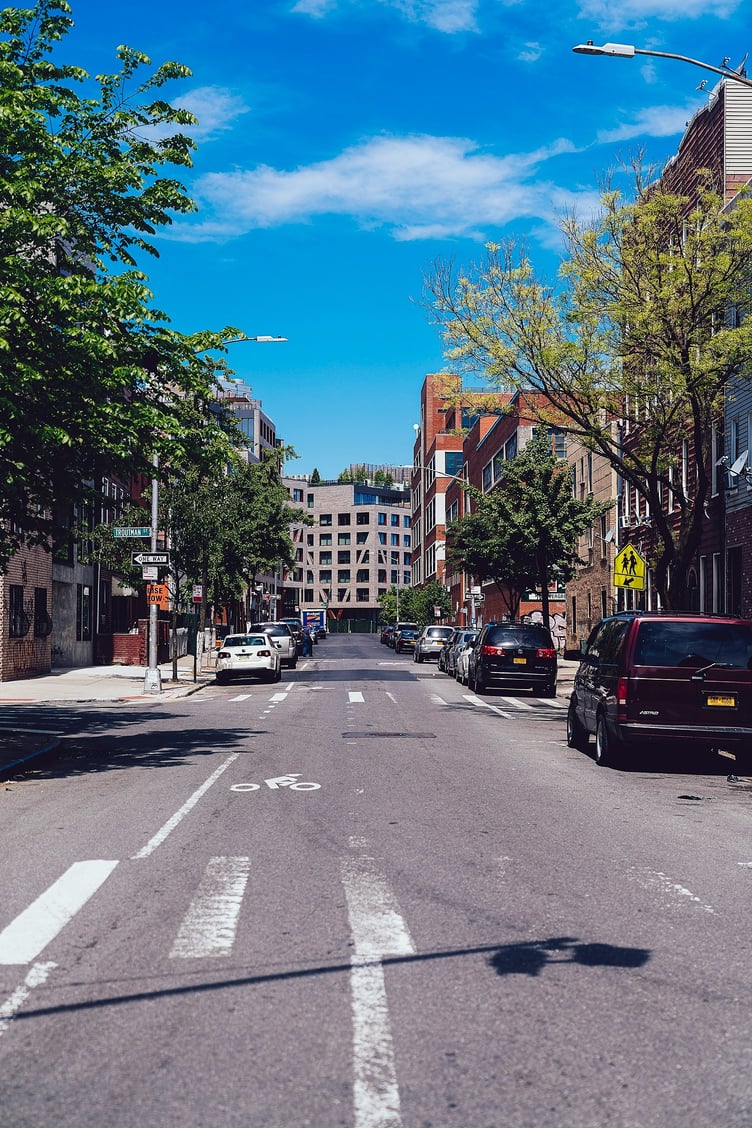
Bushwick
Learn More
Bushwick is a vibrant and dynamic neighborhood located in the northern part of Brooklyn, New York City. Known for its rich history and diverse community, it has undergone significant transformations over the years and has emerged as a trendy and sought-after destination for residents and visitors alike.
Once a predominantly indus
trial area, Bushwick has evolved into a hub for artists, creatives, and young professionals seeking an authentic and edgy urban experience. The neighborhood is characterized by its distinctive street art and graffiti-covered walls, contributing to a unique and ever-changing urban landscape. Numerous art galleries, studios, and performance spaces dot the area, making it a hotbed for artistic expression and cultural events.
Bushwick boasts a wide array of restaurants, bars, and cafes, representing various international cuisines and catering to different tastes and budgets. From trendy eateries to traditional family-owned establishments, the neighborhood offers a diverse culinary scene that attracts food enthusiasts from all over the city.
In terms of green spaces, Maria Hernandez Park stands as a popular spot for recreational activities, featuring playgrounds, sports facilities, and community events. Additionally, the Bushwick Inlet Park provides a waterfront oasis for relaxation and outdoor gatherings.
Transportation in Bushwick is convenient, with multiple subway stations connecting residents to Manhattan and other parts of Brooklyn. Commuting options also include buses and bike lanes, making it accessible for those who prefer alternative modes of transport.
However, despite its gentrification and revitalization, Bushwick grapples with issues of affordable housing and displacement of longtime residents. As the neighborhood continues to evolve, community-driven efforts seek to strike a balance between preserving its authentic character and embracing new developments.
Overall, Bushwick encapsulates the vibrant spirit of Brooklyn's creative scene, providing an exciting and ever-evolving environment for its residents and visitors to explore and enjoy.
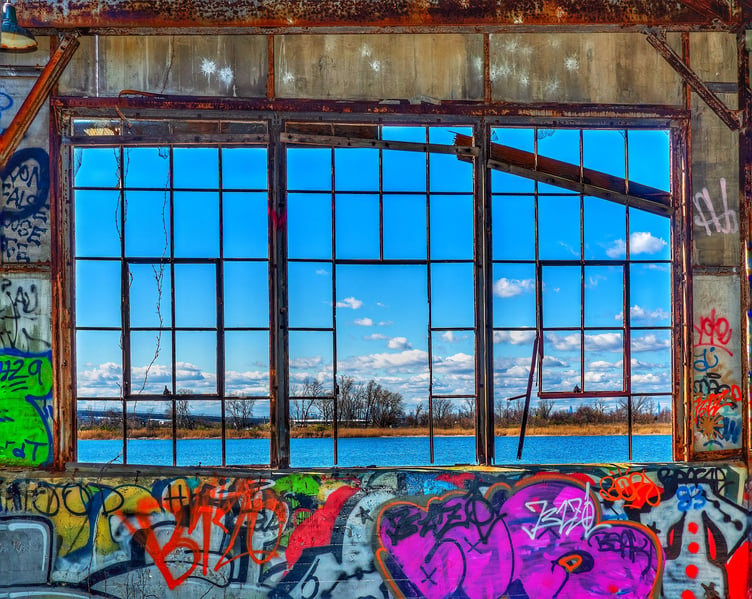
Canarsie
Learn More
Canarsie offers a blend of urban convenience and suburban charm in the southeastern corner of Brooklyn. While it lacks a subway station within its borders, residents enjoy easy access to the 2, 5, and L lines a short distance away, providing connections throughout the city. This family-friendly neighborhood boasts a mix of tree-lined streets with single-family homes and quieter apartment buildings.
Despite its residential feel, Canarsie isn't without commercial areas. Residents have access to a variety of restaurants, cafes, and shops lining major thoroughfares like Flatbush Avenue and Rockaway Parkway. Several supermarkets ensure convenient grocery shopping. History buffs will appreciate the proximity to Jamaica Bay, a historical site with remnants of Native American settlements and the intriguing past of amusement parks like Canarsie Pier.
For families with children, Canarsie offers green spaces for recreation. The massive Floyd Bennett Field, a former Naval Air Station, provides ample room for sports, picnics, and kite flying. Other parks scattered throughout the neighborhood, like Canarsie Park and Paerdegat Park, offer playgrounds and green escapes for all ages. Overall, Canarsie provides a peaceful and friendly atmosphere with a strong sense of community, all within easy reach of the excitement of New York City.
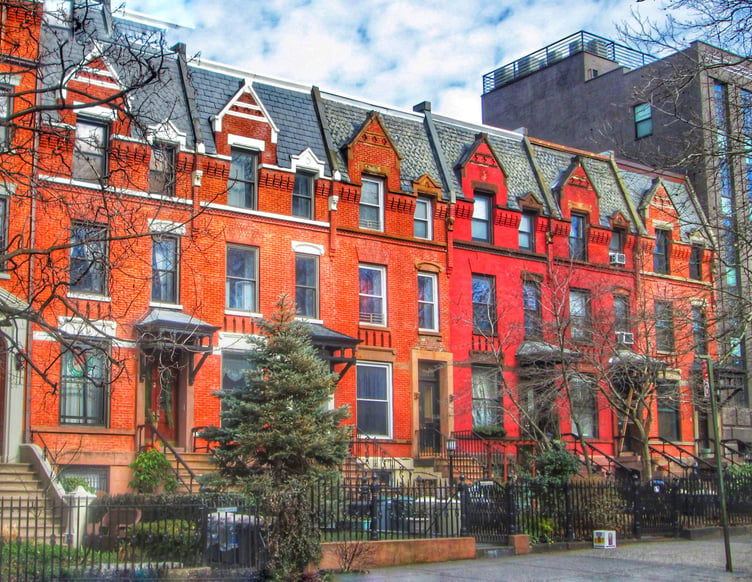
Carroll Gardens
Learn More
Carroll Gardens, located in the heart of Brooklyn, New York, is a charming and vibrant neighborhood known for its historic brownstone buildings, tree-lined streets, and strong sense of community. With its distinctive blend of old-world charm and modern amenities, Carroll Gardens offers residents and visitors a unique urban experience.
The neighborhood's iconic brownstone homes, many dating back to the 19th century, give Carroll Gardens its quintessential charm. Lush front gardens and wrought-iron fences contribute to the area's picturesque appeal. Smith Street and Court Street, the main commercial thoroughfares, are lined with an array of boutiques, cafes, restaurants, and specialty shops that cater to diverse tastes.
Carroll Gardens' community atmosphere is palpable in its local parks and green spaces. Carroll Park, a central gathering point, features playgrounds, sports courts, and a dog run, making it a hub for recreational activities. The neighborhood's strong Italian-American heritage is evident in its historic Italian specialty stores and traditional eateries, adding cultural richness to its identity.
Its proximity to Manhattan and convenient access to public transportation, including several subway lines, make Carroll Gardens a sought-after residential area. Families, professionals, and artists are drawn to its well-preserved architecture, tight-knit community vibe, and the ease of reaching other parts of the city.
In essence, Carroll Gardens encapsulates a harmonious blend of history, culture, and modern living, making it an enduringly appealing neighborhood in the dynamic tapestry of Brooklyn's urban landscape.
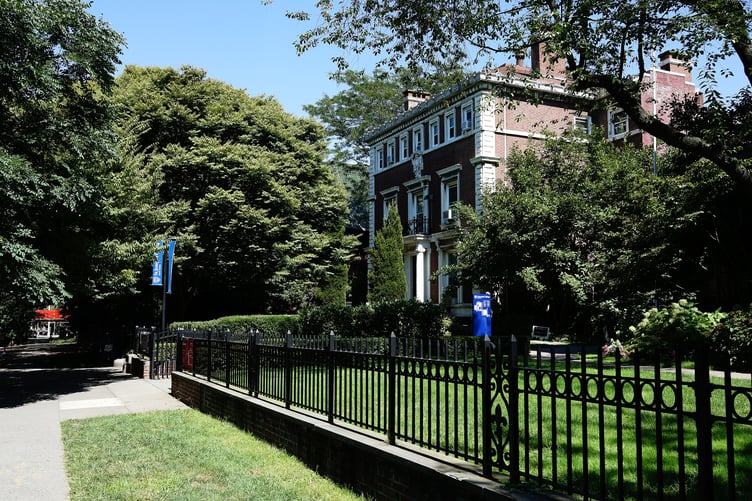
Clinton Hill
Learn More
Clinton Hill is a vibrant and historic neighborhood nestled in the heart of Brooklyn, New York. With its tree-lined streets, historic brownstones, and a rich cultural scene, Clinton Hill exudes a unique charm that attracts residents and visitors alike.
The neighborhood's architectural landscape is a blend of 19th-century elegance and modern creativity. Rows of well-preserved brownstones and townhouses, adorned with intricate details, reflect the area's historic roots. Clinton Hill is also home to Pratt Institute, a renowned art and design school, which contributes to the area's artistic energy and a young, diverse population.
Fulton Street and Myrtle Avenue are the neighborhood's main commercial corridors, hosting a mix of boutiques, cafes, restaurants, and local shops. Residents can enjoy a wide range of culinary experiences, from trendy eateries to cozy coffee shops, serving both traditional and international cuisines.
Green spaces are abundant, with Fort Greene Park neighboring the area. This expansive park offers recreational opportunities, including sports fields, playgrounds, and serene spots for relaxation. Additionally, Clinton Hill's proximity to cultural hubs like the Brooklyn Academy of Music (BAM) and the Barclays Center ensures residents have access to entertainment, concerts, and sporting events.
Transportation is convenient, with multiple subway lines connecting residents to Manhattan and other parts of Brooklyn. The sense of community is strong in Clinton Hill, with regular events, farmers' markets, and local gatherings that foster interaction among neighbors.
In summary, Clinton Hill boasts a harmonious blend of historic allure, artistic vibrancy, and a welcoming community spirit. Its diverse offerings, from architectural beauty to cultural richness, make it a sought-after destination for those seeking a quintessential Brooklyn experience.
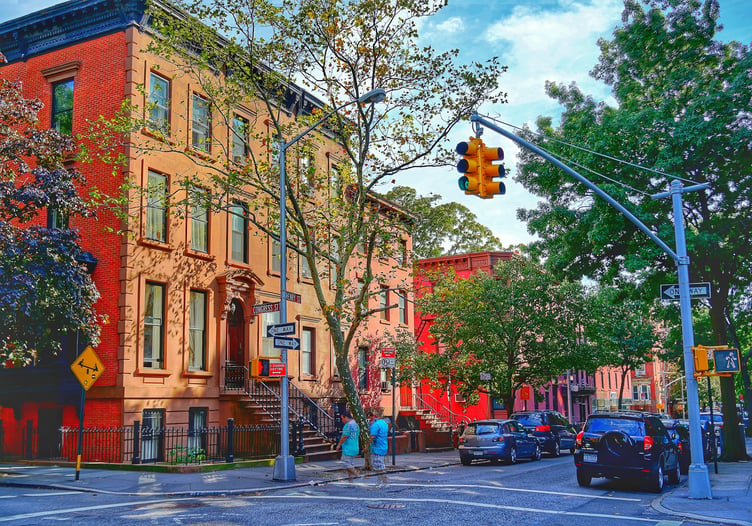
Cobble Hill
Learn More
Nestled within the bustling borough of Brooklyn, New York, Cobble Hill stands as a serene and historic neighborhood that exudes charm and community spirit. Characterized by its tree-lined streets, elegant brownstone architecture, and vibrant local scene, Cobble Hill offers a harmonious blend of old-world charm and contemporary urban living.
The neighborhood's heart beats along Court Street, a bustling thoroughfare lined with boutiques, cafés, and restaurants, where residents and visitors gather to savor culinary delights and engage in leisurely strolls. Its historic roots are evident in the meticulously preserved 19th-century townhouses, which lend a timeless atmosphere to the area.
Cobble Hill boasts a strong sense of community, fostering connections through its local schools, parks, and cultural institutions. The verdant Cobble Hill Park provides a lush oasis for relaxation and recreation, while the nearby Brooklyn Historical Society offers a window into the neighborhood's past.
With a mix of families, professionals, and artists, Cobble Hill radiates a diverse and inclusive atmosphere. The neighborhood's proximity to the waterfront grants easy access to the scenic Brooklyn Promenade and stunning views of the Manhattan skyline. Additionally, well-regarded schools and convenient public transportation options enhance its allure for families and commuters.
Cobble Hill's enchanting streets, artisanal shops, and rich history combine to create a neighborhood that encapsulates the spirit of quintessential Brooklyn living, making it an idyllic haven for those seeking a balance between urban vibrancy and small-community warmth.
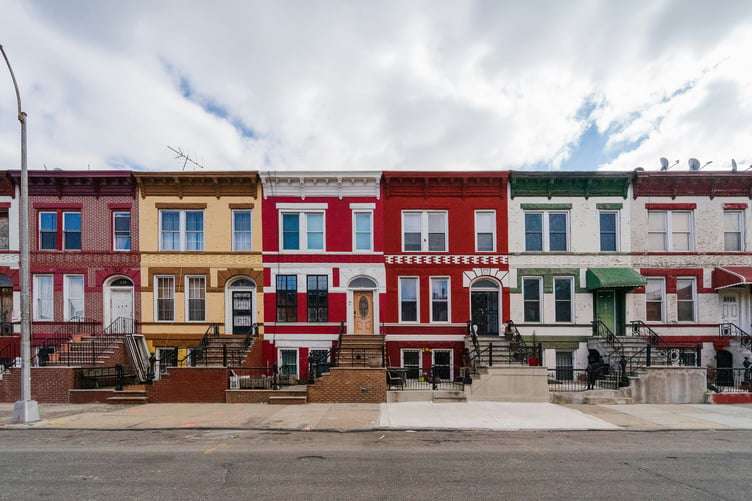
Crown Heights
Learn More
Crown Heights, a vibrant neighborhood in Brooklyn, New York, is a captivating blend of cultures, history, and urban energy. Known for its tree-lined streets and historic brownstone buildings, the area exudes a unique charm that attracts a diverse community.
Cultural diversity is a defining feature of Crown Heights. The neighborhood is home to a rich tapestry of communities, including African-American, Caribbean, Hasidic Jewish, and various immigrant populations. This diversity is perhaps most evident in the culinary scene, with an array of eateries offering flavors from around the world.
Prospect Park, a sprawling urban oasis, is a cornerstone of Crown Heights. The park's lush greenery, recreational facilities, and the serene Prospect Park Zoo offer residents an escape from city life. Additionally, the Brooklyn Museum and Brooklyn Botanic Garden are cultural gems that contribute to the neighborhood's intellectual and aesthetic vibrancy.
Crown Heights has experienced a renaissance in recent years, with trendy boutiques, cafes, and art galleries popping up alongside long standing community institutions. The neighborhood's Franklin Avenue and Nostrand Avenue corridors buzz with activity, providing residents with a range of shopping and entertainment options.
However, amidst this gentrification, Crown Heights grapples with issues of affordability and displacement, as rising property values sometimes challenge the socioeconomic diversity that has long been its hallmark.
In essence, Crown Heights captivates with its blend of history, cultural fusion, and evolving urban dynamics. It stands as a testament to Brooklyn's ever-changing identity while celebrating the strength of its community bonds.
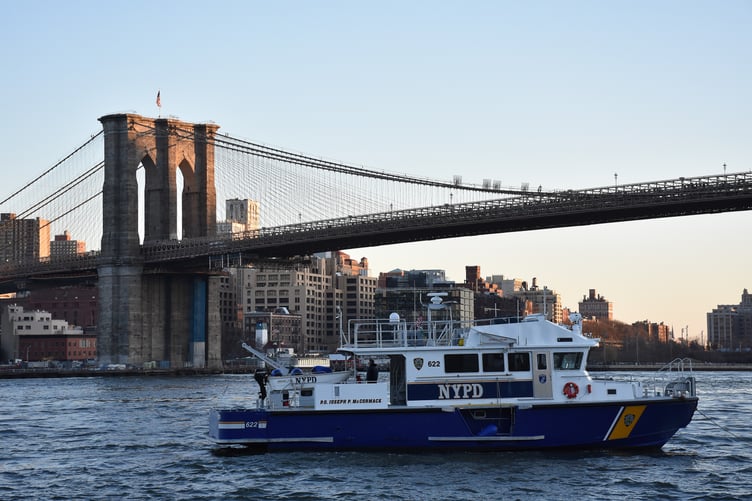
Downtown Brooklyn
Learn More
Downtown Brooklyn, a vibrant and rapidly evolving urban hub, stands as a testament to the dynamic spirit of New York City. Nestled at the crossroads of culture, commerce, and creativity, this neighborhood pulsates with energy and diversity.
Skyscrapers and historic brownstones coalesce to form the iconic skyline, showcasing a seamless blend of old and new. The area's commercial prowess is exemplified by the sprawling MetroTech Center, housing major corporate offices and tech firms, while Fulton Street bustles with a mix of retail chains and local boutiques. Renowned academic institutions like NYU Tandon School of Engineering contribute to the neighborhood's intellectual vitality.
Culture flourishes through an array of attractions. The Brooklyn Academy of Music (BAM) stands as a cultural beacon, hosting theater, music, and dance performances. The Barclays Center, a modern sports and entertainment arena, hosts NBA games, concerts, and events that draw crowds from across the city.
Prospect Park, a verdant oasis designed by the creators of Central Park, offers a reprieve from the urban bustle. The Brooklyn Bridge's iconic span connects the neighborhood to Manhattan, fostering accessibility and connectivity.
Downtown Brooklyn's culinary scene reflects its diverse population, offering a global tapestry of flavors. Trendy cafes and ethnic eateries line the streets, catering to every palate.
The neighborhood's evolution is ongoing, with ongoing construction and development projects shaping its future. As more residential spaces are created, a growing community calls this neighborhood home, ensuring that Downtown Brooklyn remains a nexus of innovation, entertainment, and urban living.

East Williamsburg
Learn More
East Williamsburg is a vibrant neighborhood located in the northern part of Brooklyn, New York. It's a diverse and rapidly changing area, known for its artistic flair, trendy atmosphere, and a mix of cultures that give it a unique character.
The neighborhood is bounded by the neighborhoods of Williamsburg, Bushwick, and Maspeth, and it offers a blend of residential and industrial spaces. Historically an industrial area, East Williamsburg has seen a transformation in recent years, with many warehouses and factories converted into trendy loft apartments, artist studios, and creative workspaces.
East Williamsburg is home to a dynamic arts and music scene, with numerous galleries, performance spaces, and music venues. You can explore street art and murals adorning the walls, reflecting the neighborhood's creative spirit. The streets are often buzzing with the energy of local artists and musicians.
This neighborhood also boasts a diverse dining scene, with a mix of restaurants, cafes, and food trucks offering everything from artisanal coffee to international cuisines. The nightlife is lively, with a range of bars and clubs for those looking to enjoy the evening.
For outdoor enthusiasts, Cooper Park provides a green oasis for relaxation and recreational activities. Transportation options are convenient, with access to the L and J/Z subway lines, making it easy to commute to other parts of Brooklyn and Manhattan.
East Williamsburg is a community where old meets new, creating a dynamic and inviting atmosphere for residents and visitors alike. Whether you're into the arts, culinary delights, or simply enjoying the unique ambiance of a neighborhood in transition, East Williamsburg has something to offer everyone.

Fort Greene
Learn More
Fort Greene is a vibrant and culturally rich neighborhood located in the northwest corner of Brooklyn, New York City. Known for its historic charm, tree-lined streets, and diverse community, Fort Greene offers a unique blend of residential serenity and urban energy.
The neighborhood is named after the iconic Fort Greene Park, a 30-acre green space designed by Frederick Law Olmsted and Calvert Vaux, who also designed Central Park. This park serves as the heart of the neighborhood, offering a serene escape from city life with its rolling hills, playgrounds, and an iconic statue of the Revolutionary War hero Nathanael Greene.
Fort Greene is celebrated for its cultural diversity and artistic heritage. The Brooklyn Academy of Music (BAM) is a major cultural institution here, hosting world-class performances in theater, dance, and music. The neighborhood also boasts a thriving arts scene, with numerous galleries, studios, and a strong sense of community support for local artists.
Historic brownstone and limestone townhouses line the streets, creating a picturesque atmosphere that attracts residents and visitors alike. The Fort Greene Historic District preserves the neighborhood's architectural character, with well-preserved 19th-century buildings.
Culinary enthusiasts will find an array of dining options, from trendy cafes to renowned restaurants, serving a wide range of cuisines. The vibrant Fort Greene Farmers Market offers fresh, locally sourced produce and artisanal products.
Transportation is convenient, with multiple subway lines, including the G, B, Q, R, and C trains, providing easy access to other parts of Brooklyn and Manhattan.
In summary, Fort Greene is a diverse, historic, and culturally vibrant neighborhood where residents enjoy a blend of green spaces, cultural experiences, and a strong sense of community. Its rich history and modern amenities make it a sought-after destination for both New Yorkers and newcomers to the city.
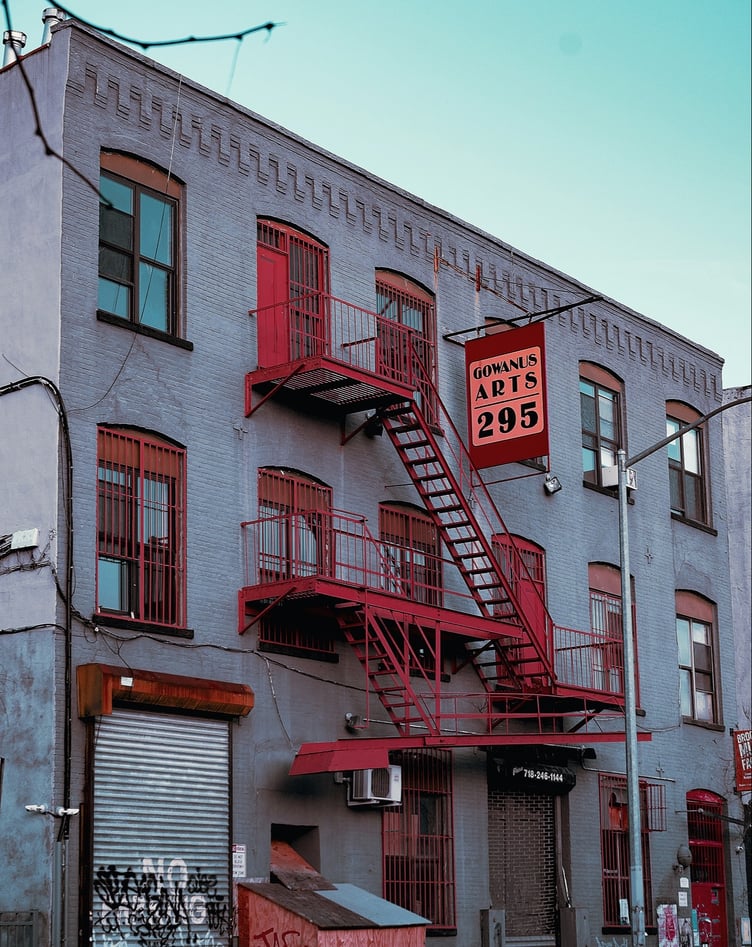
Gowanus
Learn More
Gowanus, located in the western part of Brooklyn, New York City, is a vibrant and evolving neighborhood with a unique blend of industrial charm and artistic energy. Known for its namesake canal, Gowanus has been undergoing a significant transformation in recent years, transitioning from a historically industrial area to a thriving residential and cultural hub.
The Gowanus Canal itself is both an iconic feature and an ongoing environmental restoration project. It has become a symbol of the neighborhood's commitment to sustainability and revitalization. The Gowanus neighborhood is bounded by Park Slope to the east and Carroll Gardens to the west, providing a diverse and dynamic surrounding community.
One of Gowanus' most striking features is its growing art and creative scene. The neighborhood is home to numerous galleries, studios, and cultural spaces that showcase the work of local artists. The vibrant arts community often hosts open studios, exhibitions, and events, contributing to Gowanus' reputation as a hub for creativity and innovation.
Gowanus also offers a variety of dining options, from trendy eateries to classic neighborhood restaurants. The Gowanus Canal is lined with picturesque walking paths and provides a scenic backdrop for outdoor activities. Residents and visitors can enjoy kayaking on the canal, exploring nearby parks like Gowanus Green, or visiting the historic Old Stone House.
Transportation in Gowanus is convenient, with several subway lines serving the neighborhood, making it easy to reach other parts of Brooklyn and Manhattan.
In summary, Gowanus is a neighborhood in transition, blending its industrial past with a creative and residential renaissance. Its art scene, waterfront attractions, and diverse community make it an exciting place to live and explore in Brooklyn.
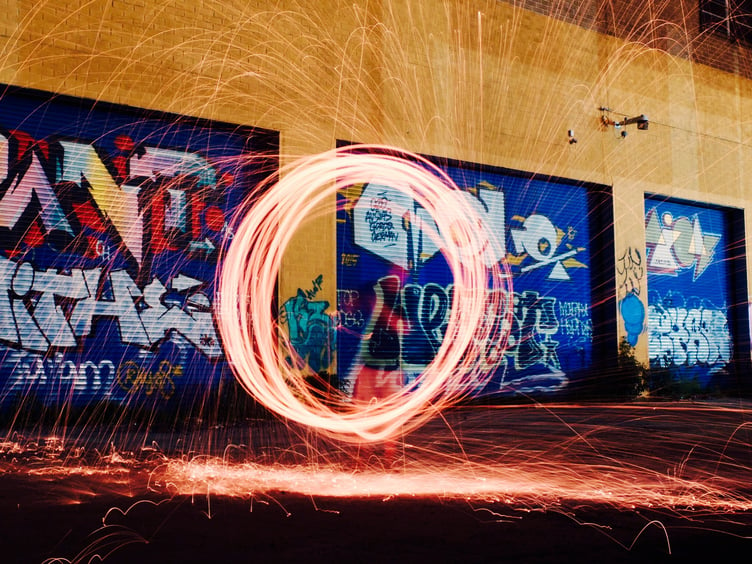
Greenpoint
Learn More
Greenpoint, located in the northern part of Brooklyn, New York, is a vibrant and eclectic neighborhood that offers a unique blend of old-world charm and modern urban living. With a rich history and a strong sense of community, Greenpoint has become a sought-after destination for residents and visitors alike.
One of Greenpoint's defining features is its waterfront location along the East River, which provides stunning views of the Manhattan skyline. The East River State Park and Transmitter Park offer green spaces and recreational opportunities, making it a favorite spot for outdoor enthusiasts.
Greenpoint is known for its diverse population, with a mix of long-time residents and newcomers from various cultural backgrounds. This diversity is reflected in the neighborhood's dining scene, where you can find an array of international cuisines, from traditional Polish eateries to trendy cafes and farm-to-table restaurants.
The neighborhood is also celebrated for its thriving arts and creative scene, with numerous galleries, studios, and boutiques showcasing the work of local artists and designers. The annual Greenpoint Open Studios event allows visitors to explore the artistic talent within the community.
Greenpoint's real estate landscape features a mix of historic brownstones, industrial lofts, and new condominium developments. While the cost of living has risen in recent years, it remains relatively more affordable than some neighboring areas like Williamsburg and Manhattan.
Public transportation options are excellent, with multiple subway lines and bus routes providing easy access to other parts of Brooklyn and Manhattan.
In summary, Greenpoint is a dynamic neighborhood that offers a blend of cultural diversity, waterfront beauty, and a strong sense of community. Whether you're strolling along the waterfront, exploring local art, or enjoying the diverse culinary offerings, Greenpoint has something to offer everyone.
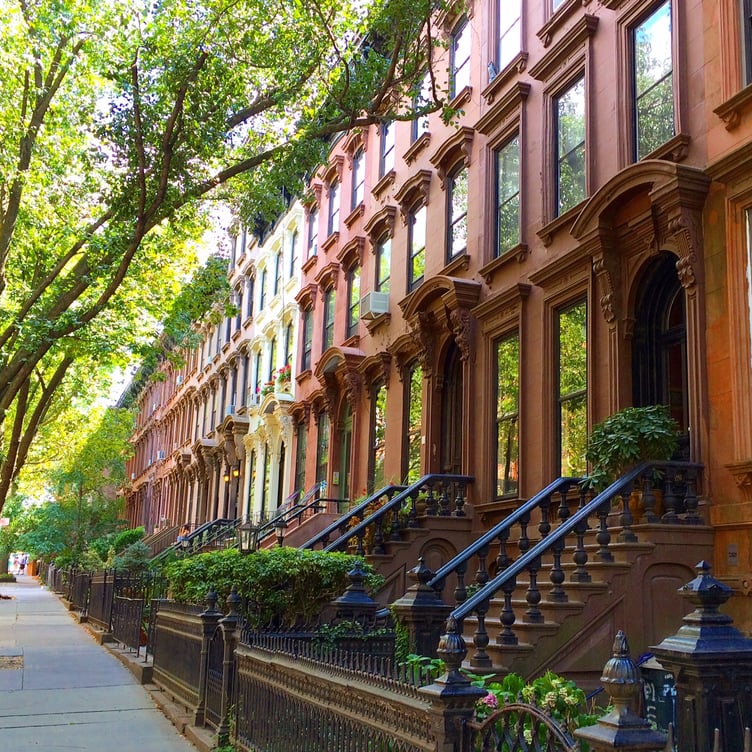
Park Slope
Learn More
Park Slope, located in the heart of Brooklyn, is a vibrant and family-friendly neighborhood that offers a unique blend of urban living and a strong sense of community. With tree-lined streets, historic brownstones, and a diverse population, Park Slope is known for its charm and cultural richness.
One of the neighborhood's standout features is its proximity to Prospect Park, a sprawling urban oasis designed by Frederick Law Olmsted and Calvert Vaux. Residents and visitors alike can enjoy the park's winding paths, picturesque lake, playgrounds, and outdoor concerts, making it a hub for outdoor recreation and relaxation.
Park Slope is also renowned for its eclectic culinary scene. From cozy cafes to upscale restaurants and trendy food markets like the Brooklyn Flea, there's no shortage of dining options. The neighborhood is a haven for foodies, with a wide range of international cuisines and farm-to-table eateries.
Families are drawn to Park Slope for its excellent schools, playgrounds, and family-friendly atmosphere. Fifth Avenue and Seventh Avenue are bustling commercial strips, offering boutique shopping, grocery stores, and a vibrant nightlife with bars, music venues, and theaters.
Transportation in Park Slope is convenient, with multiple subway lines, including the B, D, F, G, N, Q, and R trains, providing easy access to Manhattan and other parts of Brooklyn. The neighborhood's bike lanes and pedestrian-friendly streets make it a haven for cyclists and walkers.
In summary, Park Slope is a dynamic Brooklyn neighborhood that seamlessly blends urban living with a strong sense of community. Its green spaces, diverse culture, and excellent amenities make it a sought-after destination for residents and visitors alike.
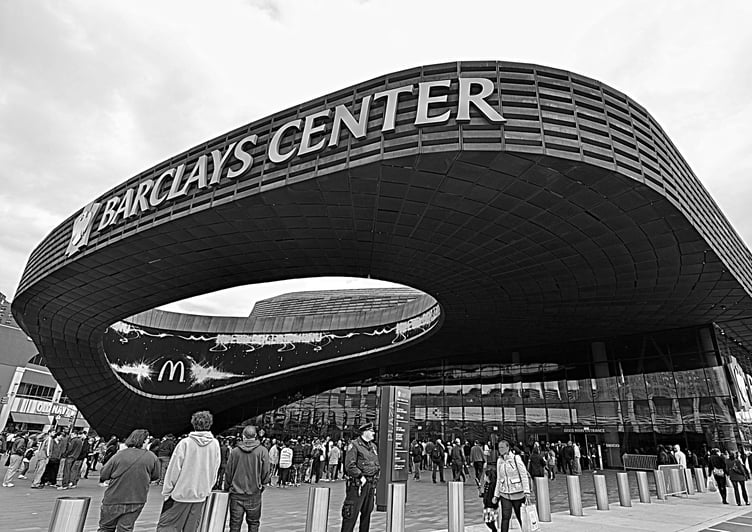
Prospect Heights
Learn More
Prospect Heights is a vibrant and diverse neighborhood located in the heart of Brooklyn, New York City. With tree-lined streets, a mix of architectural styles, and a rich cultural scene, it's a popular choice for residents seeking a blend of urban convenience and a sense of community.
Prospect Heights boasts a mix of housing options, including historic brownstones, pre-war apartment buildings, and modern condos. The neighborhood's charm lies in its well-preserved historic homes and the efforts to maintain its architectural character.
The neighborhood is home to cultural landmarks like the Brooklyn Museum and the Brooklyn Botanic Garden, making it a hub for art and nature enthusiasts. The annual West Indian American Day Carnival (Labor Day Parade) is a highlight, drawing crowds from all over the city.
Prospect Heights is a foodie's paradise with an array of restaurants, cafes, and bars offering diverse cuisines, from farm-to-table eateries to international flavors. Vanderbilt Avenue is a food hotspot, known for its culinary delights.
The neighborhood fosters a strong sense of community with local events, farmers' markets, and community gardens. Residents often gather at Prospect Park, a sprawling green space that offers recreational activities and a serene escape from city life.
Prospect Heights benefits from proximity to major subway lines (2, 3, 4, 5, B, Q) and Atlantic Terminal, providing easy access to Manhattan and other parts of Brooklyn.
Families appreciate the presence of quality public and private schools, making it an attractive choice for those with children.
In summary, Prospect Heights is a dynamic Brooklyn neighborhood known for its cultural vibrancy, architectural character, and strong sense of community. Whether you're exploring its cultural institutions, dining scene, or simply strolling through its historic streets, Prospect Heights offers a unique and inviting urban experience.
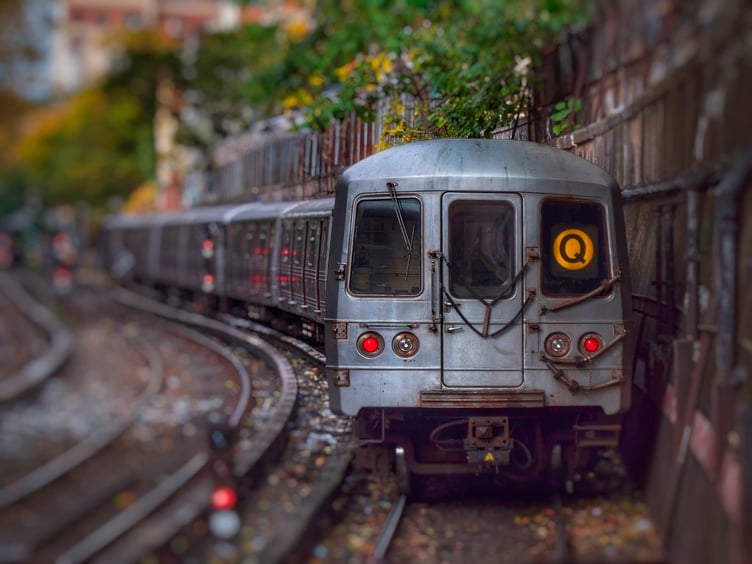
Prospect Lefferts Gardens
Learn More
Prospect Lefferts Gardens, often referred to as PLG, is a vibrant and diverse neighborhood located in the heart of Brooklyn, New York City. Nestled between the bustling neighborhoods of Crown Heights and Flatbush, PLG offers a unique blend of history, culture, and community that makes it a truly special place to live.
The neighborhood is known for its tree-lined streets, historic brownstones, and beautiful Prospect Park, designed by the same architects who created Central Park. The park provides residents with a lush green space for outdoor activities, picnics, and cultural events year-round.
Cultural diversity is a hallmark of PLG, with a rich tapestry of cultures and cuisines represented. Caribbean, African, and Caribbean-American influences are particularly strong, reflected in the local eateries, markets, and festivals. The annual West Indian American Day Carnival, a colorful and lively celebration, is a must-see event that draws visitors from all over the city.
Transportation in PLG is convenient, with multiple subway lines providing quick access to Manhattan and other parts of Brooklyn. The neighborhood is also home to the Brooklyn Botanic Garden and the Brooklyn Museum, adding to its cultural appeal.
Families are drawn to PLG for its family-friendly atmosphere, with excellent schools, community programs, and playgrounds. The affordable housing options, including historic brownstones and pre-war apartment buildings, make it an attractive place to settle down.
In recent years, Prospect Lefferts Gardens has experienced a surge in popularity, attracting young professionals and artists who appreciate its mix of urban amenities and neighborhood charm. While it has seen some gentrification, the community remains committed to preserving its unique character and inclusivity.
In summary, Prospect Lefferts Gardens is a dynamic neighborhood that offers a warm sense of community, cultural richness, and convenient city living. It's a place where history and modernity coexist, making it a neighborhood that truly embodies the spirit of Brooklyn.
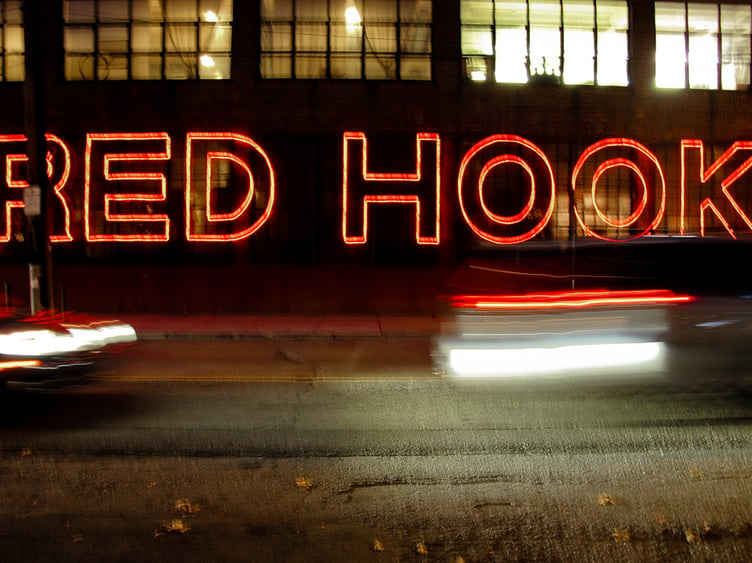
Red Hook
Learn More
Red Hook, located in the southwestern part of Brooklyn, New York, is a unique and vibrant neighborhood with a rich history and a distinct character. This waterfront community is known for its industrial roots, artistic flair, and tight-knit community.
One of the defining features of Red Hook is its stunning views of the New York Harbor and the Statue of Liberty. The neighborhood's cobblestone streets, historic warehouses, and charming rowhouses give it a distinctive old-world charm. Red Hook has undergone significant revitalization in recent years, attracting young professionals and families seeking an alternative to the bustling city life.
The neighborhood is home to a diverse community and a thriving arts scene, with several galleries, studios, and performance spaces. The Red Hook Initiative and local schools provide educational and recreational opportunities for residents, emphasizing community engagement.
Red Hook is also renowned for its culinary scene. The Red Hook Food Vendors Market, with its diverse selection of international cuisines, is a local favorite. Additionally, the Red Hook Winery and other craft beverage producers contribute to the neighborhood's reputation as a food and drink destination.
One of Red Hook's standout attractions is the Brooklyn Cruise Terminal, which welcomes cruise ships from around the world. The neighborhood also boasts public parks and recreational spaces, including Louis Valentino Jr. Park and Pier, which offer stunning waterfront views, sports facilities, and a playground.
Red Hook's unique blend of history, art, community, and natural beauty makes it an increasingly desirable place to live and visit in Brooklyn, offering a distinctive urban experience that sets it apart from the rest of the city.

South Slope
Learn More
South Slope is a vibrant and sought-after neighborhood located in the heart of Brooklyn, New York City. Nestled just south of the iconic Park Slope, this residential enclave offers a unique blend of urban living and community charm. Here's a concise 250-word summary of South Slope:
South Slope is known for its tree-lined streets, historic brownstones, and a tight-knit community atmosphere. It is an ideal destination for families, young professionals, and anyone seeking a peaceful yet lively urban environment.
One of the standout features of the South Slope is its abundance of green spaces. The neighborhood is home to several parks, including the expansive Prospect Park, where residents can enjoy outdoor activities, picnics, and cultural events. Additionally, the historic Green-Wood Cemetery is a serene oasis for both nature lovers and history enthusiasts.
The dining scene in South Slope is diverse and ever-evolving. Fifth Avenue, the neighborhood's main thoroughfare, boasts a wide array of restaurants, cafes, and bars. You can find everything from trendy brunch spots to cozy, family-owned eateries offering cuisine from around the world.
South Slope is also a hub for cultural activities. The neighborhood is home to art galleries, theaters, and live music venues, ensuring there's always something exciting happening.
Transportation is convenient, with multiple subway lines and bus routes connecting residents to the rest of Brooklyn and Manhattan. The R and F trains provide quick access to Manhattan, making the daily commute a breeze.
In recent years, South Slope has seen increased demand in the real estate market due to its charm and accessibility. The neighborhood continues to evolve while maintaining its welcoming, community-oriented spirit, making it a fantastic place to call home in the heart of Brooklyn.
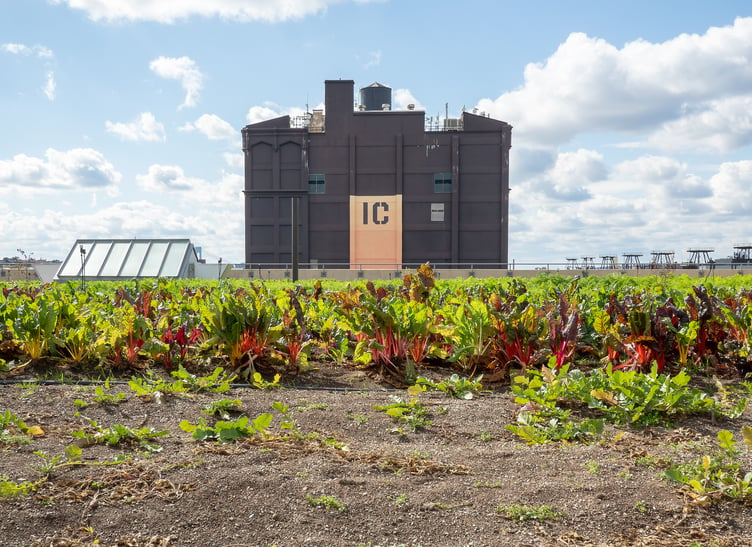
Sunset Park
Learn More
Sunset Park, located in the southwestern part of Brooklyn, New York City, is a diverse and vibrant neighborhood known for its rich cultural heritage, stunning waterfront views, and tight-knit community atmosphere. Covering a large area, Sunset Park offers a mix of residential, commercial, and industrial spaces, making it a unique and dynamic place to live and work.
The neighborhood's namesake, Sunset Park itself, is a beautiful green space that provides panoramic views of the Manhattan skyline and the Statue of Liberty. It's a popular spot for picnics, sports, and relaxation, drawing residents and visitors alike.
Sunset Park is renowned for its cultural diversity, with a strong Hispanic and Asian presence, particularly from the Chinese and Mexican communities. This diversity is reflected in the local cuisine, with a wide range of authentic restaurants and food markets offering everything from dim sum to tacos.
The neighborhood is also home to Industry City, a complex of warehouses and industrial spaces that have been transformed into a hub for innovation, creativity, and entrepreneurship. This area has attracted tech startups, artisans, and makers, contributing to Sunset Park's economic growth.
Transportation options are abundant, with several subway lines and bus routes connecting Sunset Park to other parts of Brooklyn and Manhattan. The neighborhood's real estate landscape includes a mix of brownstones, pre-war apartment buildings, and newer developments, offering housing options for a variety of incomes.
In recent years, Sunset Park has experienced some gentrification, which has brought both opportunities and challenges. However, the neighborhood's strong sense of community and cultural pride remain intact, making it a unique and thriving part of New York City.
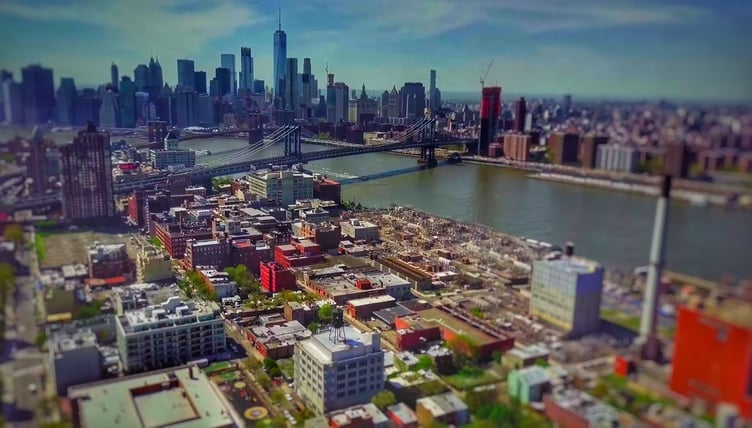
Vinegar Hill
Learn More
Vinegar Hill is a historic neighborhood nestled in the heart of Brooklyn, New York City. Its charming cobblestone streets and preserved 19th-century architecture transport residents and visitors back in time. Bordered by the East River to the north and DUMBO to the south, Vinegar Hill exudes a unique blend of old-world charm and modern urbanity.
The neighborhood's name derives from the Battle of Vinegar Hill in Ireland, a nod to the Irish immigrants who once settled here. Today, Vinegar Hill maintains its distinct character with a mix of residential buildings, converted warehouses, and artisanal businesses. The area's industrial past is evident in its loft-style apartments and converted factories, attracting a creative and diverse community.
While Vinegar Hill maintains a peaceful atmosphere, it benefits from its proximity to bustling DUMBO and the Brooklyn Navy Yard. Residents can easily access trendy boutiques, art galleries, and gourmet eateries. The scenic Brooklyn Bridge Park, offering stunning views of the Manhattan skyline, is a short walk away.
The neighborhood's strong sense of community is evident in local events like farmers' markets and art walks, fostering connections among its residents. Vinegar Hill strikes a balance between its historic roots and a contemporary urban lifestyle, making it an attractive enclave for those who appreciate both history and modernity. Whether strolling along its historic streets or enjoying the vibrant cultural scene, Vinegar Hill offers a distinctive New York City experience.
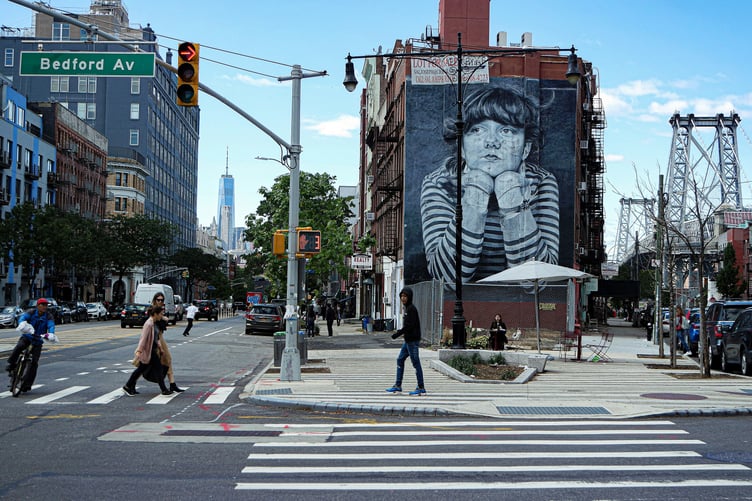
Williamsburg
Learn More
Williamsburg, located in the heart of Brooklyn, New York, is a vibrant and culturally rich neighborhood that seamlessly combines its historic charm with a thriving modern scene. Known for its eclectic mix of residents and a unique blend of old and new, Williamsburg has become one of the city's trendiest and most sought-after destinations.
The neighborhood's historic roots are visible in its well-preserved brownstone buildings, cobblestone streets, and waterfront warehouses that have been repurposed into stylish lofts and art studios. These historic elements give Williamsburg a distinctive character that attracts artists, creatives, and young professionals.
One of the area's standout features is its thriving arts and music scene. The neighborhood is a hub for emerging artists, with numerous galleries, live music venues, and performance spaces. The Williamsburg waterfront offers stunning views of the Manhattan skyline and is home to events like the Northside Festival, attracting a diverse crowd of culture enthusiasts.
Williamsburg is also renowned for its culinary diversity. It boasts a wide array of restaurants, cafes, and food markets, catering to all tastes and budgets. From trendy eateries and farm-to-table dining to ethnic food stalls at Smorgasburg, there's something to satisfy every palate.
Transportation in Williamsburg is convenient, with multiple subway lines connecting residents to Manhattan and other parts of Brooklyn. The neighborhood's parks and green spaces, including McCarren Park and East River State Park, provide opportunities for outdoor recreation and relaxation.
In summary, Williamsburg is a dynamic neighborhood that harmoniously fuses its historical roots with a thriving contemporary culture. With its artistic vibrancy, culinary delights, and prime location, it's no wonder Williamsburg continues to be a magnet for those seeking a unique and lively urban experience.

Windsor Terrace
Learn More
Windsor Terrace is a charming and tightly-knit neighborhood located in the southwestern corner of Brooklyn, New York. This tranquil residential enclave is known for its tree-lined streets, historic architecture, and a strong sense of community. With its idyllic atmosphere and proximity to Prospect Park, Windsor Terrace offers a peaceful alternative to the hustle and bustle of Manhattan.
The heart of Windsor Terrace lies along Prospect Park Southwest, where you'll find a variety of shops, restaurants, and local businesses. The neighborhood's dining scene features a mix of classic Italian eateries, cafes, and trendy dining spots, making it a culinary destination for residents and visitors alike.
Windsor Terrace is a haven for outdoor enthusiasts, as it borders Prospect Park, a vast urban oasis designed by the creators of Central Park. Residents can enjoy hiking, picnicking, sports, and cultural events within a stone's throw of their homes.
The housing stock in Windsor Terrace is primarily composed of charming rowhouses and pre-war apartment buildings, which exude a classic, old-world charm. The community is diverse and welcoming, with a strong commitment to maintaining its historic character.
With excellent public transportation options, including subway lines and buses, Windsor Terrace provides easy access to the rest of Brooklyn and Manhattan, making it an ideal location for those who work in the city. In summary, Windsor Terrace is a peaceful, family-friendly neighborhood that beautifully combines urban convenience with suburban tranquility.
Bronx
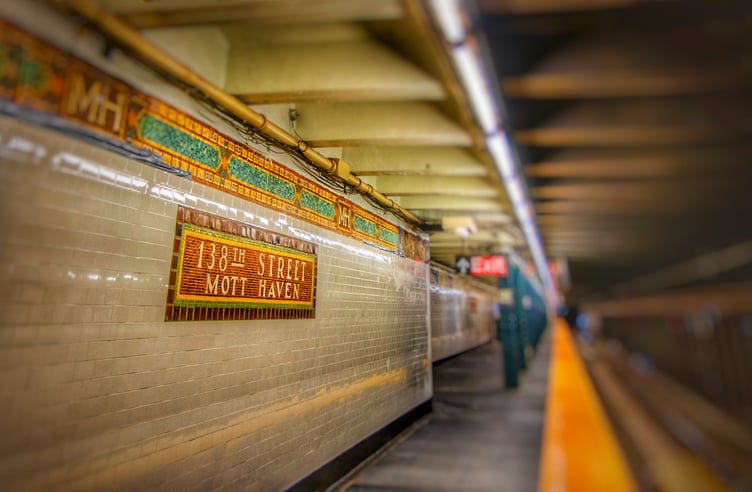
Mott Haven
Learn More
Mott Haven, located in the southwestern section of the Bronx, New York, is a neighborhood experiencing a vibrant renaissance. Historically known as one of the first industrial districts in the Bronx, it has transformed into a burgeoning community for arts, culture, and waterfront development. The area is delineated by the Harlem River to the south, the Bronx Kill to the east, and the Major Deegan Expressway to the west, offering a unique blend of urban and natural landscapes.
Mott Haven's architectural landscape is a mix of old and new, with well-preserved 19th-century brownstones, brick row houses, and modern developments. The neighborhood's historic district is particularly notable for its architectural beauty and significance. In recent years, Mott Haven has attracted a wave of artists, musicians, and entrepreneurs, drawn by its affordable living spaces, vibrant street art, and growing arts scene. The area boasts several art galleries, studios, and performance spaces, contributing to its cultural revival.
The neighborhood is also known for its community gardens and parks, such as St. Mary’s Park, offering residents green spaces for recreation and relaxation. The waterfront along the Harlem River is undergoing development to enhance public access and recreational opportunities, promising to further enrich the neighborhood's appeal.
Mott Haven's culinary scene is diverse, featuring a mix of traditional Latin American eateries, trendy cafes, and bars, reflecting the area's multicultural heritage. With improved transportation links, including several subway lines and bus routes, Mott Haven is increasingly connected to the wider New York City area, making it an attractive option for those seeking a dynamic and evolving community within the Bronx.

Parkchester
Learn More
Parkchester is a vibrant residential neighborhood located in the East Bronx borough of New York City. Developed in the late 1930s, it is one of the largest planned communities in the United States, covering over 120 acres of land. Known for its architectural charm, Parkchester is characterized by its Art Deco and Moderne-style buildings, showcasing a mix of residential apartments, commercial spaces, and community amenities.
The neighborhood's residential landscape is diverse, offering a range of housing options including apartments, co-ops, and condominiums. Parkchester attracts a diverse community of residents, including families, young professionals, and individuals from various cultural backgrounds. The neighborhood's strong sense of community is fostered through its active civic associations and community organizations.
Parkchester is well-equipped with amenities and services to meet residents' needs. The Parkchester Shopping Center serves as a commercial hub, offering a wide array of retail stores, supermarkets, restaurants, and entertainment options. The neighborhood also boasts several schools, including public and private institutions, providing educational opportunities for residents of all ages.
For recreation, Parkchester offers a variety of green spaces, parks, and playgrounds where residents can enjoy outdoor activities and leisure time. The nearby Bronx Park, home to the Bronx Zoo and the New York Botanical Garden, provides additional opportunities for outdoor exploration and cultural experiences.
The neighborhood benefits from its convenient location and transportation access. Parkchester is served by multiple subway and bus lines, making it easy to commute to other parts of the Bronx and Manhattan. The proximity to major highways like the Cross Bronx Expressway and the Bronx River Parkway further enhances connectivity for residents.
Parkchester's rich history, diverse community, and array of amenities make it a desirable place to live for individuals seeking a well-rounded urban experience within a tight-knit neighborhood setting.
Manhattan
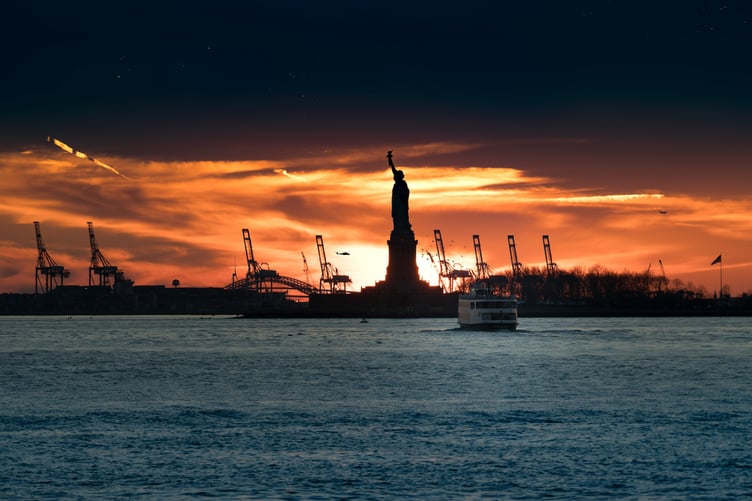
Battery Park City
Learn More
Battery Park, located in the southernmost tip of Manhattan, is a vibrant and historic neighborhood that offers a unique blend of natural beauty, cultural attractions, and a bustling urban atmosphere.
Battery Park City's residential buildings feature modern architecture and luxurious amenities, providing residents with high-end living spaces and stunning views. The neighborhood is known for its commitment to sustainability and green initiatives, with many buildings incorporating eco-friendly features and practices.
Residents and visitors can enjoy leisurely walks along the promenade, soaking in panoramic vistas of the river, Statue of Liberty, and the Jersey City skyline. The Esplanade, a picturesque walkway, provides a serene escape from the bustling city, featuring seating areas, gardens, and public art installations.
Transportation in Battery Park City is convenient, with access to multiple subway lines and bus routes, allowing for easy commuting to other parts of Manhattan and beyond. The neighborhood is also well-connected to nearby cultural attractions, including the Financial District, Tribeca, and the South Street Seaport.
Culturally, Battery Park is home to several notable institutions, including the Museum of Jewish Heritage, which educates visitors about Jewish history and the Holocaust, and the Skyscraper Museum, dedicated to the history and architecture of tall buildings. The neighborhood also hosts various outdoor concerts, festivals, and art exhibitions throughout the year.
Battery Park is also a popular destination for families, as it offers various recreational facilities, including playgrounds, basketball courts, and bike paths. The waterfront promenade is perfect for leisurely strolls or jogging while taking in the stunning waterfront views.
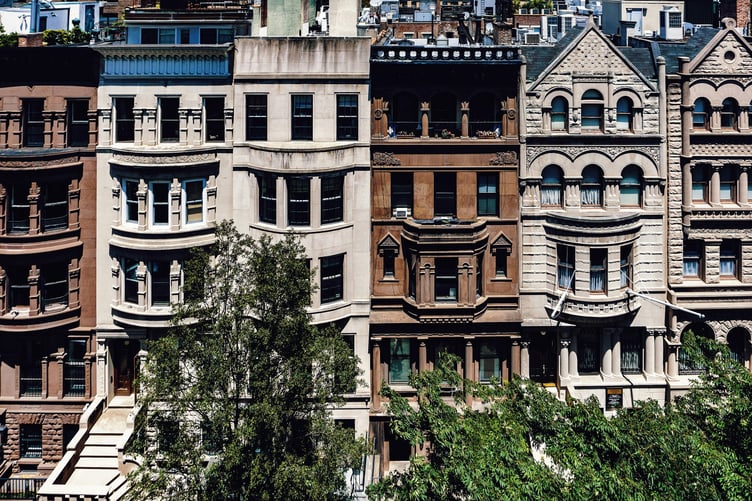
Carnegie Hill
Learn More
Carnegie Hill, located on the Upper East Side of Manhattan in New York City, is a historic and affluent neighborhood known for its cultural institutions, tree-lined streets, and elegant brownstone residences. Named after the philanthropist Andrew Carnegie, the area boasts a mix of pre-war architecture and modern luxury apartments, creating a charming and diverse streetscape.
One of Carnegie Hill's notable landmarks is the Cooper-Hewitt, Smithsonian Design Museum, housed in the grand Andrew Carnegie Mansion. This museum showcases a vast collection of design objects, making it a cultural hub for art enthusiasts. The neighborhood is also home to the Solomon R. Guggenheim Museum, designed by Frank Lloyd Wright, featuring a distinctive spiral structure that houses an impressive collection of modern and contemporary art.
Residents of Carnegie Hill enjoy proximity to Central Park, offering a serene escape from the urban hustle. The park provides opportunities for recreational activities, jogging, and leisurely strolls. The neighborhood is well-connected, with convenient access to public transportation, including subway lines and buses.
Carnegie Hill's vibrant commercial scene includes upscale boutiques, gourmet restaurants, and cozy cafes. Madison Avenue, one of the area's main thoroughfares, is renowned for its high-end shopping destinations, adding to the neighborhood's allure.
In summary, Carnegie Hill blends historical charm with modern sophistication, making it a sought-after residential enclave with cultural richness and a welcoming community ambiance.

Central Harlem
Learn More
Central Harlem, nestled in the heart of Manhattan, pulsates with a rich cultural history that has shaped its vibrant present. Stretched between 110th Street and 155th Street, the neighborhood is a tapestry of diversity, blending historic landmarks with a dynamic contemporary energy.
At its core lies the iconic Apollo Theater, a beacon of African American culture since the 1930s. This venue has hosted legendary performers, propelling the neighborhood into the spotlight of the Harlem Renaissance. Today, Central Harlem maintains its cultural roots through an array of art galleries, music venues, and community events that celebrate its heritage.
The architecture reflects a mix of brownstone residences and pre-war buildings, giving the streets a distinctive charm. Residents enjoy the lush greenery of Marcus Garvey Park, a tranquil escape with recreational facilities and a vibrant amphitheater. The neighborhood's soulful rhythm extends to its culinary scene, featuring a blend of soul food joints, Caribbean eateries, and trendy cafes.
Central Harlem is a community in transition, experiencing a wave of gentrification alongside efforts to preserve its historical character. The blend of old and new creates a unique atmosphere, attracting a diverse population of artists, professionals, and families. Residents relish the sense of community fostered by local events like street fairs and farmers' markets, contributing to Central Harlem's enduring appeal as a dynamic and culturally significant enclave in Manhattan.
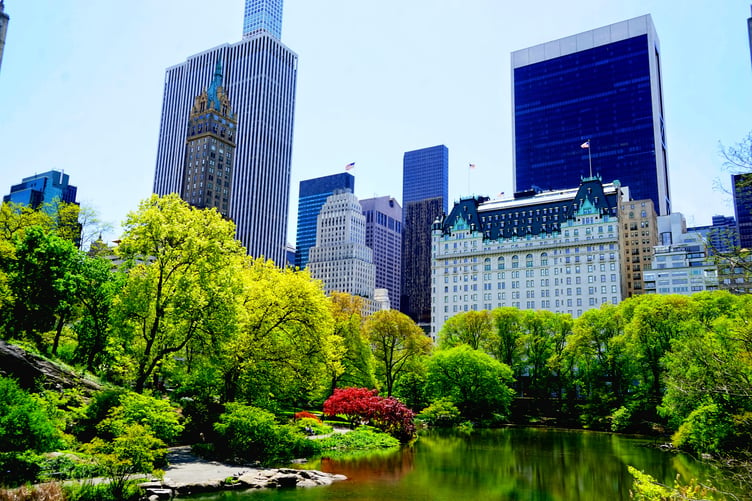
Central Park South
Learn More
Central Park South, nestled in the heart of Manhattan, is a prestigious and iconic neighborhood that exudes elegance and sophistication. Bordered by Central Park to the north and showcasing the stunning backdrop of the city's skyline, this enclave is synonymous with luxury and opulence.
The residential landscape is dominated by high-end condominiums and luxurious hotels, offering residents and visitors alike breathtaking views of Central Park. The area is a haven for those seeking a harmonious blend of tranquility and urban vibrancy. Residents enjoy proximity to the lush greenery of Central Park, where they can escape the hustle and bustle of city life.
The neighborhood is a magnet for cultural enthusiasts, with world-class museums such as The Museum of Modern Art (MoMA) and The Frick Collection within walking distance. Fifth Avenue, one of the most exclusive shopping districts in the world, is lined with designer boutiques and upscale retailers, catering to the discerning tastes of its residents.
Dining options abound, ranging from Michelin-starred restaurants to cozy cafes, ensuring a diverse culinary experience. Central Park South also boasts a thriving nightlife scene, with upscale bars and lounges that offer a sophisticated atmosphere for socializing.
In addition to its cultural and culinary offerings, Central Park South is a transportation hub, providing easy access to various parts of Manhattan and beyond. With its timeless allure and proximity to key amenities, Central Park South stands as a symbol of Manhattan's prestige and allure.
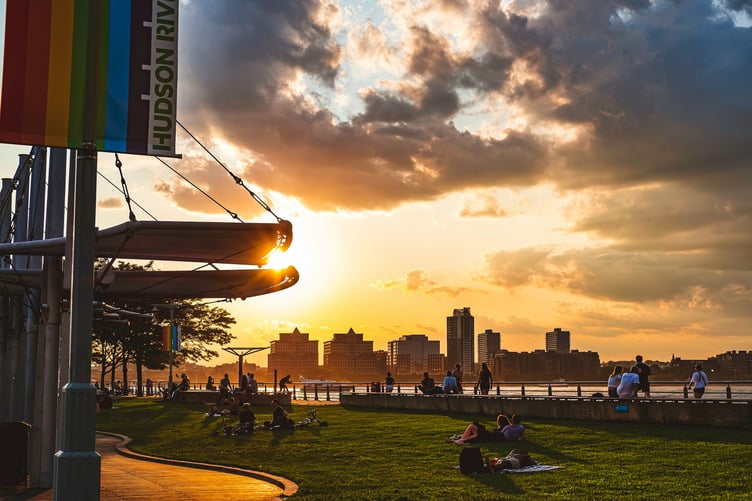
Chelsea
Learn More
Chelsea is a vibrant neighborhood located on the west side of Manhattan, New York City. Known for its diverse culture and trendy atmosphere, Chelsea offers a unique blend of residential, commercial, and artistic spaces.
Residential-wise, Chelsea offers a mix of historic brownstones, luxury high-rises, and converted industrial lofts. The neighborhood attracts a diverse community of residents, including young professionals, artists, and families.
The neighborhood boasts a wide range of culinary delights, from upscale restaurants and trendy cafes to casual eateries and food markets. Shoppers can explore a mix of high-end boutiques, designer stores, and independent retailers, making Chelsea a haven for fashion-forward individuals.The proximity to the Hudson River and the variety of parks and green spaces in the area provide opportunities for outdoor activities and recreation.
Transportation is convenient, with easy access to subway lines, bus routes, and bike lanes, allowing residents and visitors to navigate the city efficiently. Additionally, Chelsea is situated near other popular Manhattan neighborhoods like Greenwich Village, the Meatpacking District, and the Flatiron District, providing ample opportunities for exploration and entertainment.
One of the defining features of Chelsea is its thriving art community. The neighborhood is home to numerous art galleries and studios, attracting art enthusiasts and collectors from around the world. The renowned High Line, an elevated park built on an abandoned railway track, runs through Chelsea and provides a scenic backdrop for strolling, relaxing, and enjoying public art installations.
Overall, Chelsea's dynamic art scene, culinary delights, diverse residential options, and prime location make it a highly sought-after neighborhood for those seeking a lively and culturally rich experience in the heart of Manhattan.
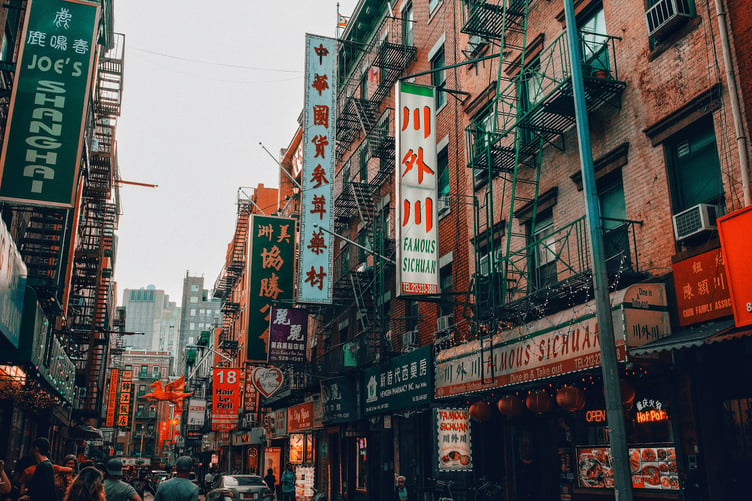
Chinatown
Learn More
Chinatown Manhattan is a vibrant and culturally rich neighborhood nestled in Lower Manhattan, New York City. Spanning over several blocks, this bustling enclave is a captivating fusion of Chinese traditions and American urban energy. With its distinct charm and historical significance, Chinatown is a favorite destination for locals and tourists alike.
Today, Chinatown Manhattan remains a thriving neighborhood, attracting visitors from around the world. It has expanded beyond its original boundaries and continues to be a symbol of Chinese heritage and culture. The neighborhood's rich history is celebrated through festivals, parades, and cultural events that showcase its traditions and contributions to the fabric of New York City.
One of the highlights of Chinatown is its architectural beauty. The streets are adorned with traditional red lanterns, ornate buildings with intricate facades, and vibrant pagoda-style roofs. Walking through Mott Street, the neighborhood's main artery, you can soak in the captivating blend of old-world charm and modern urban flair.
Chinatown is also a hub of cultural events and celebrations. The annual Lunar New Year Parade draws thousands of visitors who come to witness the dragon dances, colorful floats, and firecrackers that fill the streets with joy and excitement. Other festivals like the Autumn Moon Festival and the Chinese New Year Flower Market add to the vibrant tapestry of this neighborhood.
Beyond its cultural offerings, Chinatown also serves as a gateway to other popular destinations in Lower Manhattan. It's within walking distance of Little Italy, the trendy SoHo district, and the Financial District, making it an ideal starting point for exploration.

Civic Center
Learn More
Civic Center, located in Manhattan, New York City, is a vibrant and historically significant neighborhood. Situated in Lower Manhattan, it is home to various government buildings, cultural institutions, and a bustling community. Here is a summary of the neighborhood:
Civic Center is renowned for its rich history and architecture. It houses iconic structures like City Hall, a majestic building that serves as the seat of the New York City government. The neighborhood is also home to the Thurgood Marshall United States Courthouse, a significant federal courthouse, and the David N. Dinkins Municipal Building. These historic landmarks add to the neighborhood's charm and attract tourists and history enthusiasts.
The neighborhood offers a diverse range of cultural attractions. One notable institution is the New York City Police Museum, which showcases the history of the NYPD and its role in the city's development. For art lovers, the neighborhood is in close proximity to the renowned Tribeca Film Festival and the Museum of Chinese in America, which celebrates Chinese-American history and culture.
Civic Center is also known for its vibrant culinary scene. The neighborhood offers a mix of restaurants, cafes, and food trucks, catering to various tastes and preferences. From upscale dining options to local delis and international cuisine, there is something for everyone.
Additionally, Civic Center benefits from its central location. It is well-connected to other parts of Manhattan and the city as a whole, with easy access to public transportation. The neighborhood is also adjacent to other popular areas such as Tribeca, Chinatown, and the Financial District, providing residents and visitors with a wealth of shopping, entertainment, and recreational opportunities.
In conclusion, Civic Center is a thriving neighborhood that seamlessly blends history, culture, and modern amenities. Its impressive architecture, cultural institutions, and diverse culinary offerings make it an attractive destination for both residents and tourists alike.
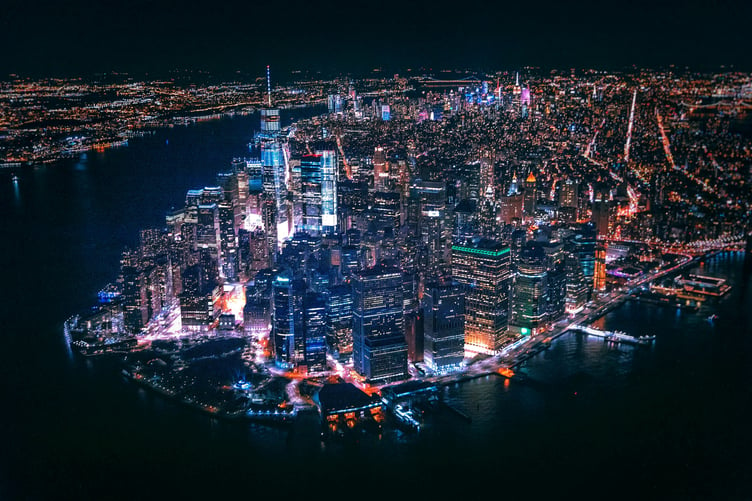
Downtown Manhattan
Learn More
Downtown Manhattan, the historic heart of New York City, is a vibrant and diverse neighborhood that encompasses a rich tapestry of culture, commerce, and history. Spanning from the southern tip of the island to roughly 14th Street, this area is home to iconic landmarks, bustling streets, and a mix of residential and commercial spaces.
The Financial District, located at the southern tip of Manhattan, is the epicenter of global finance, with Wall Street and the New York Stock Exchange drawing financial professionals from around the world. This district is also home to historic sites such as Trinity Church and Federal Hall, which played pivotal roles in American history.
Moving north, you'll find the revitalized South Street Seaport, a waterfront area with restaurants, shops, and cultural attractions. It's a great place to enjoy fresh seafood, stroll along the East River, and visit the South Street Seaport Museum.
Tribeca, which stands for "Triangle Below Canal Street," is known for its cobblestone streets and a mix of loft-style apartments and high-end dining. It's a hub for the arts, with many galleries and the renowned Tribeca Film Festival.
Greenwich Village, with its tree-lined streets and historic brownstones, offers a bohemian atmosphere. The neighborhood is famous for its role in the Beat Generation and folk music scenes, and it's home to Washington Square Park, NYU, and numerous restaurants and bars.
Heading east, the Lower East Side is known for its rich immigrant history and vibrant nightlife. You can explore the Tenement Museum and indulge in a wide array of culinary experiences.
Overall, downtown Manhattan is a dynamic neighborhood with a diverse population, making it a place where the old and new seamlessly blend, and history and modernity coexist.
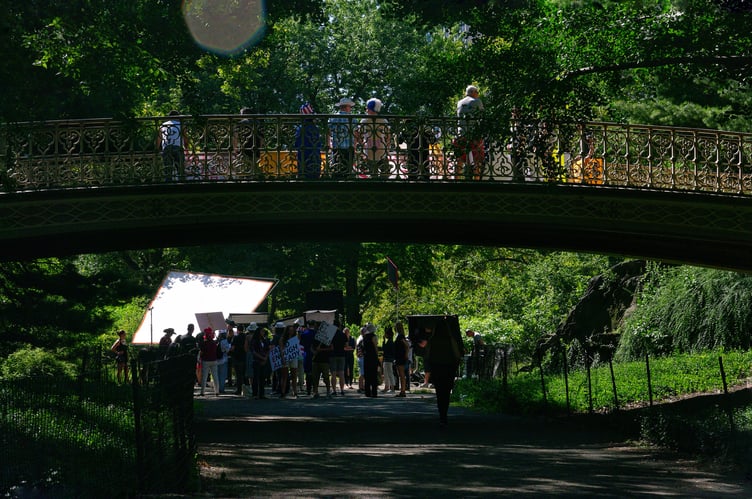
East Harlem
Learn More
East Harlem, also known as El Barrio, is a vibrant and culturally rich neighborhood situated in the northeastern part of Manhattan, New York City. Characterized by its diverse population and dynamic atmosphere, East Harlem is a melting pot of cultures and traditions that contribute to its unique identity.
The community is predominantly composed of Hispanic and African American residents, infusing the neighborhood with a lively mix of languages, cuisines, and celebrations. The streets are lined with colorful murals, reflecting the area's deep-rooted connection to its cultural heritage. Institutions like the Museo del Barrio showcase the neighborhood's commitment to preserving and celebrating Latino art and history.
East Harlem is also undergoing a transformation, with ongoing development projects contributing to its evolving landscape. The neighborhood offers a mix of housing options, from historic brownstones to modern condominiums, attracting a diverse range of residents.
Local markets and eateries contribute to the area's culinary richness, offering a variety of Latin American and soul food options. The vibrant street life and community events foster a strong sense of belonging among residents. Parks like Thomas Jefferson Park provide green spaces for recreational activities and community gatherings.
Despite undergoing changes, East Harlem remains a close-knit community with a proud cultural heritage. The blend of tradition and progress makes it an exciting and dynamic place to live, reflecting the ever-evolving tapestry of New York City.
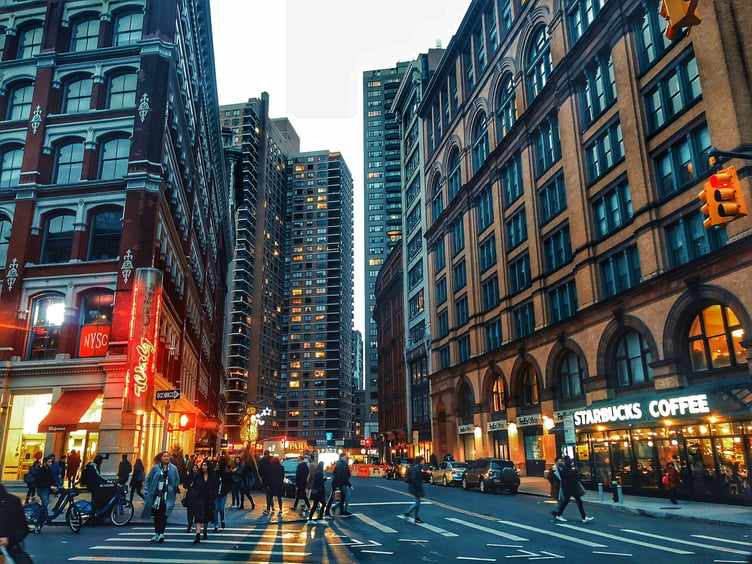
East Village
Learn More
The East Village, located in Manhattan, is a vibrant and diverse neighborhood that embodies the essence of New York City's cultural and artistic scene. Known for its eclectic mix of residents, trendy shops, lively nightlife, and rich history, the East Village offers a unique and lively atmosphere.
Despite the neighborhood playing a significant role in the 1960s and 1970s punk rock and artistic movements that made the people’s rebellious spirit alive, its influx of new developments has managed to maintain its unique character and sense of community. Residents take pride in their local establishments and community gardens, which provide a respite from the bustling city streets so the neighborhood's bohemian charm and alternative music venues goes on until today.
The East Village is also home to a thriving food scene, with a wide range of culinary options to satisfy any craving. From hole-in-the-wall ethnic eateries to upscale restaurants and trendy cafes, the neighborhood offers a diverse array of flavors from around the world.
The area is also dotted with a variety of cultural institutions, such as the iconic Anthology Film Archives and the historic La MaMa Experimental Theatre Club. These venues showcase independent films, avant-garde performances, and experimental theater productions, adding to the neighborhood's artistic appeal.
With its lively street art, vibrant nightlife, and dynamic cultural scene, the East Village continues to be a coveted destination for artists, musicians, and those seeking a taste of New York City's bohemian spirit

Financial District
Learn More
The Financial District, located in Lower Manhattan, is a bustling neighborhood known as the financial heart of New York City. It is home to Wall Street, the New York Stock Exchange, and numerous financial institutions.
Beyond finance, the Financial District offers a diverse range of amenities and attractions. The South Street Seaport, with its historic ships and cobblestone streets, offers a glimpse into the city's maritime past. The waterfront promenade provides stunning views of the East River and the Statue of Liberty.
The neighborhood is characterized by its impressive skyscrapers, including the famous One World Trade Center, the tallest building in the Western Hemisphere. The area underwent significant redevelopment following the September 11 attacks, and the 9/11 Memorial and Museum stand as poignant reminders of the tragic event.
While the Financial District is primarily a business hub, efforts have been made to create a more balanced community. Residents and visitors can enjoy a variety of dining options, from upscale restaurants to casual eateries, offering cuisines from around the world. The area also boasts several high-end shopping destinations, including the upscale Brookfield Place and the luxury retailers along Wall Street.
Overall, the Financial District is a dynamic neighborhood that seamlessly blends history, finance, and modern living. Its iconic skyline, cultural attractions, and convenient location make it a vibrant and sought-after place to live, work, and visit.

Flatiron
Learn More
The Flatiron District, located in the heart of Manhattan, is a vibrant and iconic neighborhood known for its distinctive triangular-shaped building, the Flatiron Building. This bustling area is a blend of history, commerce, and culture, making it a popular destination for residents and visitors alike.
The neighborhood is bordered by Union Square to the south, Madison Square Park to the east, Chelsea to the west, and Midtown Manhattan to the north. Its central location offers easy access to various parts of the city, with excellent public transportation options and a network of subway lines.
Flatiron is renowned for its thriving business scene, with numerous technology startups, media companies, and creative agencies calling the neighborhood home. This has led to a dynamic and energetic atmosphere, attracting professionals from different industries.
Flatiron District also boasts a vibrant cultural scene. The neighborhood is home to several art galleries, theaters, and music venues, offering a diverse array of entertainment options. Madison Square Park, located at the neighborhood's eastern edge, provides a peaceful oasis amidst the urban landscape, featuring beautiful gardens, public art installations, and a dog run.
Food enthusiasts will find themselves in culinary heaven in Flatiron, as the neighborhood is teeming with a wide array of restaurants, cafes, and eateries. From trendy brunch spots to fine dining establishments and international cuisines, there is something to suit every palate.
Overall, the Flatiron District offers a captivating blend of history, commerce, culture, and culinary delights. With its central location and vibrant atmosphere, it continues to be a sought-after neighborhood for both residents and businesses, creating an energetic and inspiring environment for all who venture into its streets.
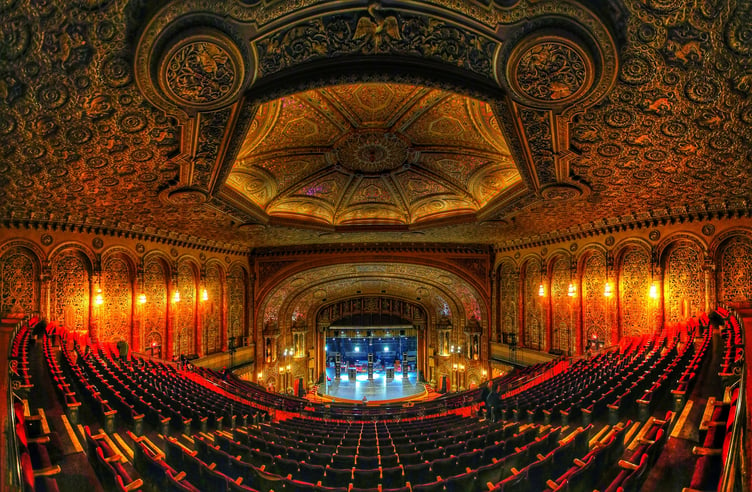
Fort George
Learn More
Fort George is a vibrant neighborhood located at the northern tip of Manhattan, New York City. Steeped in history, the area derives its name from the Fort Tryon Park that once stood here. Today, it offers residents a unique blend of urban amenities and historic charm.
The neighborhood is characterized by tree-lined streets and a mix of architectural styles, including pre-war buildings and brownstones. Fort Tryon Park, a sprawling green oasis, provides a scenic retreat with its lush landscapes and the iconic Cloisters museum, showcasing medieval European art.
Fort George is a melting pot of diverse cultures, reflected in its eclectic culinary scene. Local eateries offer a range of international flavors, contributing to the area's rich tapestry of traditions. Residents can enjoy a variety of dining experiences, from cozy cafes to family-owned restaurants.
Transportation is convenient, with the A and 1 subway lines providing easy access to the rest of Manhattan. The neighborhood is also served by several bus routes, ensuring connectivity within the community and beyond.
The sense of community is strong in Fort George, with local events and gatherings fostering neighborly connections. Educational institutions, including Yeshiva University, add an academic flair to the area.
In summary, Fort George combines historical significance with modern amenities, creating a welcoming environment for residents who appreciate a diverse and dynamic urban experience.

Gramercy Park
Learn More
Gramercy Park is much known for its historic brownstone buildings and pre-war architecture. Aside from its tree-lined streets, beautiful architecture, and exclusive private park, Gramercy Park offers a unique blend of tranquility and urban sophistication.
The neighborhood is bordered by 14th Street to the north, Irving Place to the east, 20th Street to the south, and Park Avenue South to the west. It is centrally located, making it easily accessible and well-connected to other parts of the city.
One of the main attractions of Gramercy Park is its namesake park, Gramercy Park, which is the only private park in Manhattan. Accessible only to residents of the surrounding buildings, the park offers a peaceful retreat from the bustling city. The park's beautifully manicured lawns, lush greenery, and gated entrance contribute to its exclusivity and charm.
The neighborhood is home to several architectural gems, including the famous Gramercy Park Hotel and the National Arts Club, which was once the home of Samuel J. Tilden, a former governor of New York.
In addition to its architectural beauty, Gramercy Park boasts a vibrant culinary scene. The neighborhood is dotted with a variety of restaurants, cafes, and bars, offering diverse cuisines and atmospheres to cater to every taste.
Overall, Gramercy Park captures the essence of old-world charm combined with modern conveniences. Its peaceful atmosphere, rich history, and prime location make it a highly sought-after residential area for those seeking a quintessential New York City experience.
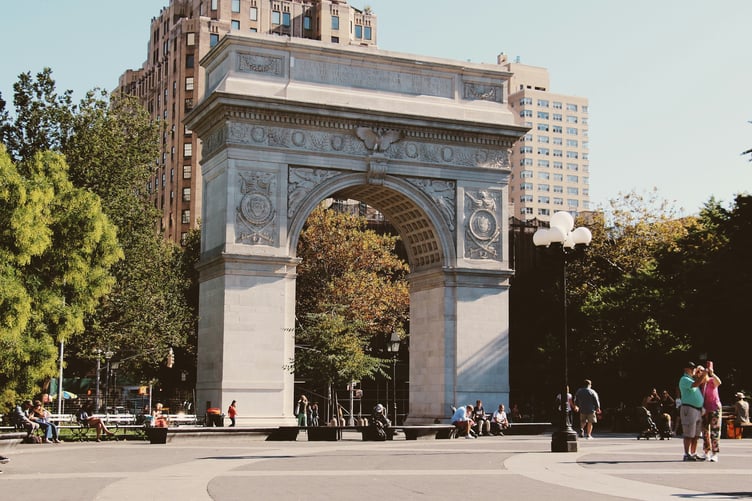
Greenwich Village
Learn More
Greenwich Village, located in Manhattan, New York City, is a vibrant and historic neighborhood renowned for its bohemian atmosphere, artistic legacy, and cultural diversity. This eclectic community stretches from Houston Street to 14th Street and from the Hudson River to Broadway, offering a unique blend of old-world charm and contemporary urban living.
One of the defining features of Greenwich Village is its picturesque tree-lined streets and historic brownstone buildings. The architecture reflects the area's rich history, with many buildings dating back to the 19th century. Washington Square Park, at the heart of the neighborhood, serves as a gathering place for residents and visitors alike, providing a serene oasis in the bustling city.
In addition to its artistic legacy, Greenwich Village is known for its vibrant dining and nightlife scene. The streets are lined with an array of trendy restaurants, cozy cafes, and lively bars offering diverse cuisines and entertainment options. The neighborhood also boasts a variety of specialty shops, boutique stores, and vintage boutiques, making it a popular destination for shopping enthusiasts.
Greenwich Village is also home to New York University (NYU), giving the area a youthful and academic atmosphere. The university's presence contributes to the neighborhood's intellectual and cultural vitality, with numerous academic events, lectures, and performances taking place throughout the year.
Overall, Greenwich Village's charming streets, artistic heritage, diverse dining options, and cultural vibrancy make it an enchanting and sought-after neighborhood in Manhattan, drawing residents and visitors alike to experience its unique character.

Greenwich Village NoHo
Learn More
Greenwich Village and NoHo, located in Manhattan, New York City, are two adjacent neighborhoods that share a rich history, vibrant culture, and a distinctive character. Together, they form a dynamic and highly sought-after area in the heart of Manhattan.
Greenwich Village, often simply called "The Village," is known for its bohemian atmosphere, artistic legacy, and historic architecture. The tree-lined streets are lined with charming brownstones, townhouses, and cobblestone alleys, creating a picturesque setting. The neighborhood has been a haven for artists, writers, musicians, and intellectuals for decades, attracting creative minds from all over the world. The Village is home to renowned cultural institutions, such as the Cherry Lane Theatre and The Players, and its streets have been immortalized in literature and film.
NoHo, short for "North of Houston Street," seamlessly blends with Greenwich Village and is characterized by its industrial lofts, cast-iron buildings, and avant-garde galleries. It has a distinct artsy vibe and is a hub for contemporary art and design. The neighborhood is also known for its upscale boutiques, trendy restaurants, and lively nightlife scene, offering a range of entertainment options for residents and visitors alike.
Both Greenwich Village and NoHo boast a vibrant dining scene, with a plethora of restaurants, cafes, and eateries serving cuisines from around the world. From cozy coffee shops to Michelin-starred establishments, there is something to suit every palate and occasion.
The neighborhoods are also well-connected to the rest of Manhattan, with easy access to public transportation, making it convenient to explore other parts of the city. Nearby attractions include Washington Square Park, NYU's campus, and the bustling SoHo shopping district.
Greenwich Village and NoHo's unique blend of history, culture, artistic energy, and lively street life make them highly sought-after residential areas and popular destinations for visitors seeking an authentic New York City experience.
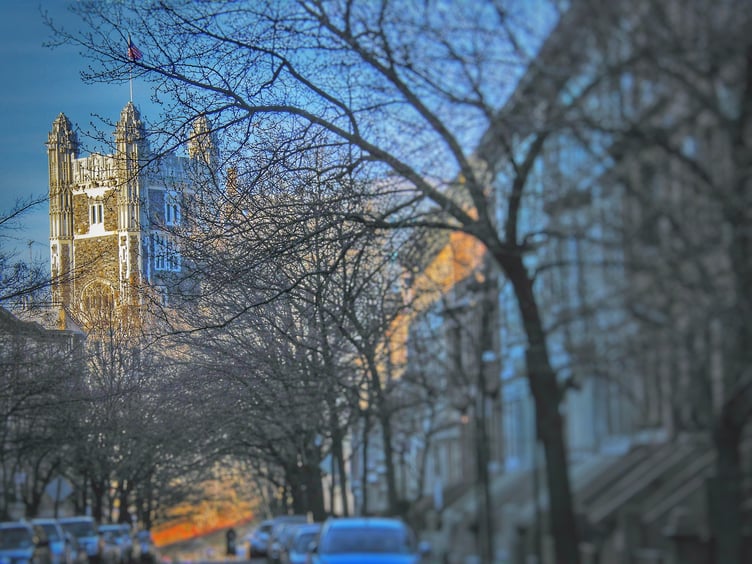
Hamilton Heights
Learn More
Hamilton Heights is a vibrant neighborhood situated in the northern part of Manhattan, New York City. Known for its historic charm and diverse community, Hamilton Heights offers a unique blend of residential tranquility and cultural richness. The neighborhood is characterized by tree-lined streets, brownstone buildings, and a mix of architectural styles that reflect its rich history.
One of the prominent features of Hamilton Heights is the iconic City College of New York campus, adding an academic atmosphere to the area. Residents and visitors alike can enjoy the green spaces provided by St. Nicholas Park, where outdoor activities and community events often take place.
The neighborhood has a strong sense of community, with local businesses, shops, and restaurants contributing to its dynamic atmosphere. You'll find a variety of dining options, from cozy cafes to ethnic eateries, offering a culinary journey for residents and visitors. Cultural institutions like the Hamilton Grange National Memorial, the former home of Alexander Hamilton, provide a glimpse into the area's historical significance.
Hamilton Heights is well-connected with public transportation options, including subway lines and buses, facilitating easy access to other parts of Manhattan. The community's diversity is reflected in its residents, creating a welcoming and inclusive environment.
In summary, Hamilton Heights combines historic charm, cultural richness, and a strong sense of community, making it a desirable and lively neighborhood in the heart of Manhattan.

Harlem
Learn More
Harlem, located in the northern section of Manhattan, New York City, is a vibrant and historically rich neighborhood that embodies a captivating blend of culture, heritage, and community spirit. With a history that traces back to the 17th century, Harlem has experienced significant transformation over the years, shaping its unique character and identity.
The neighborhood is renowned for its significant contributions to African-American culture, music, and the arts. During the Harlem Renaissance of the 1920s and 1930s, the area became a hub for intellectuals, writers, musicians, and artists, fostering creativity and innovation that still resonates today. Iconic venues like the Apollo Theater and historic sites such as the Studio Museum in Harlem continue to showcase the neighborhood's artistic legacy.
Harlem's diversity is a defining feature, boasting a dynamic mix of residents from various ethnic backgrounds, including African-American, Hispanic, and Caucasian communities. This cultural tapestry is evident in the neighborhood's vibrant restaurants, shops, and street life, creating a lively atmosphere that is both inviting and captivating.
In recent years, Harlem has undergone significant revitalization and development. Formerly abandoned buildings have been transformed into modern housing and commercial spaces, attracting new residents and businesses to the area. However, Harlem remains committed to preserving its rich history, evident in the well-maintained brownstones and historical landmarks that dot the neighborhood.
Harlem's community-centered approach is evident in its numerous festivals, parades, and community events that celebrate its diverse heritage and foster a strong sense of belonging among its residents. The neighborhood's warm and friendly ambiance contributes to a strong community spirit, making it an attractive place to live for families and young professionals alike.
In summary, Harlem is a neighborhood teeming with history, culture, and diversity. Its influence on American art, music, and literature is undeniable, and its lively atmosphere, combined with its commitment to preserving its heritage, continues to make it a beloved and unique part of Manhattan.
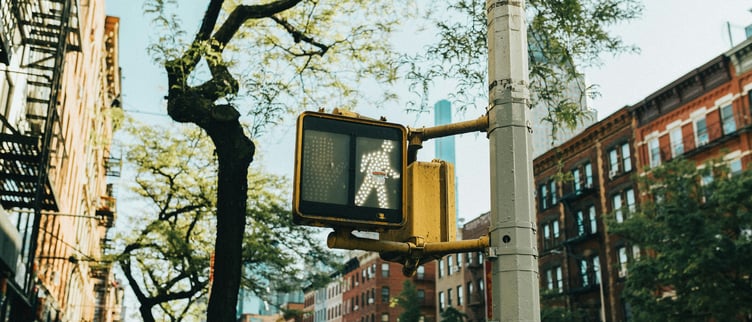
Hell's Kitchen
Learn More
Hell's Kitchen, located in the heart of Manhattan, is a vibrant and diverse neighborhood that has undergone significant transformation over the years. Nestled between 34th Street and 59th Street, bordered by Eighth Avenue and the Hudson River, Hell's Kitchen is a bustling community known for its rich history, culinary delights, and thriving arts scene.
Historically, Hell's Kitchen was a gritty and working-class neighborhood, earning its reputation from the Irish immigrant population and the tough, industrial atmosphere. However, in recent years, the neighborhood has experienced rapid gentrification, attracting young professionals and families seeking a vibrant urban lifestyle.
Today, Hell's Kitchen offers an eclectic mix of old and new. Historic brownstones and pre-war buildings coexist with sleek modern developments, giving the neighborhood a unique architectural blend. The streets are lined with trendy restaurants, cozy cafes, and lively bars, making it a haven for food enthusiasts and nightlife lovers.
The neighborhood is also home to several renowned performing arts venues, including the iconic Theater District on Broadway. Theater enthusiasts flock to Hell's Kitchen to catch a Broadway show or enjoy off-Broadway productions. The neighborhood is also a hub for aspiring actors and artists, with numerous acting studios, art galleries, and dance schools dotting the streets.
For outdoor enthusiasts, Hell's Kitchen provides access to the Hudson River Park, a scenic waterfront park that offers biking and jogging paths, sports fields, and stunning views of the river and New Jersey skyline. The park is a popular spot for picnics, sunsets, and recreational activities.
With its mix of history, culture, and modern amenities, Hell's Kitchen continues to be a vibrant and desirable neighborhood that captures the essence of New York City's dynamic spirit.
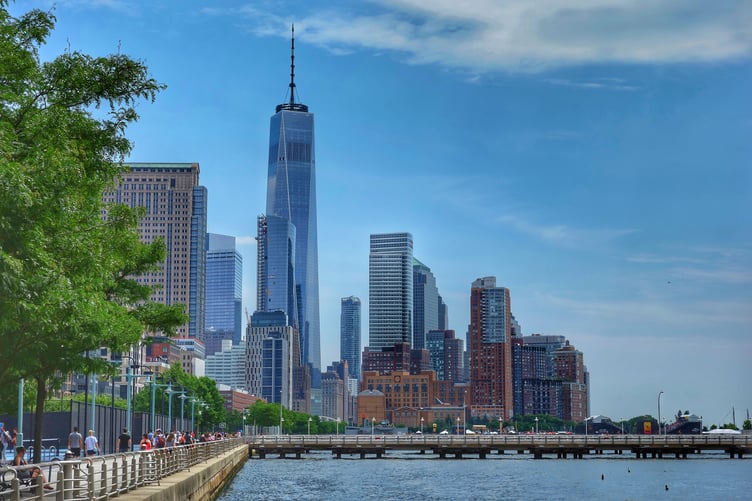
Hudson Square
Learn More
Hudson Square, nestled in the southwestern part of Manhattan, is a vibrant and evolving neighborhood that seamlessly blends historic charm with modern sophistication. Formerly an industrial district, the area has undergone a remarkable transformation in recent years, becoming a hub for creativity, technology, and cultural pursuits.
The neighborhood is characterized by its cobblestone streets, historic buildings, and a mix of architectural styles that reflect its rich history. Hudson Square is home to a diverse community, including artists, professionals, and entrepreneurs. The area boasts a dynamic arts scene, with numerous galleries and studios contributing to its creative atmosphere.
One of the neighborhood's standout features is the Hudson River Park, offering residents and visitors a scenic waterfront escape. This green oasis provides recreational spaces, bike paths, and stunning views of the Hudson River. The High Line, an elevated park built on a former railway, also extends into the southern part of Hudson Square, adding another layer of greenery and urban charm.
In recent years, Hudson Square has become a magnet for technology and media companies, attracting a young and dynamic workforce. The area is home to innovative startups and established firms alike, contributing to its reputation as a burgeoning tech and creative hub.
Culinary enthusiasts will find a diverse range of dining options, from trendy cafes to upscale restaurants, offering a culinary journey that reflects the neighborhood's cosmopolitan vibe. With its unique blend of history, culture, and innovation, Hudson Square stands out as a distinctive and appealing enclave within the heart of Manhattan.
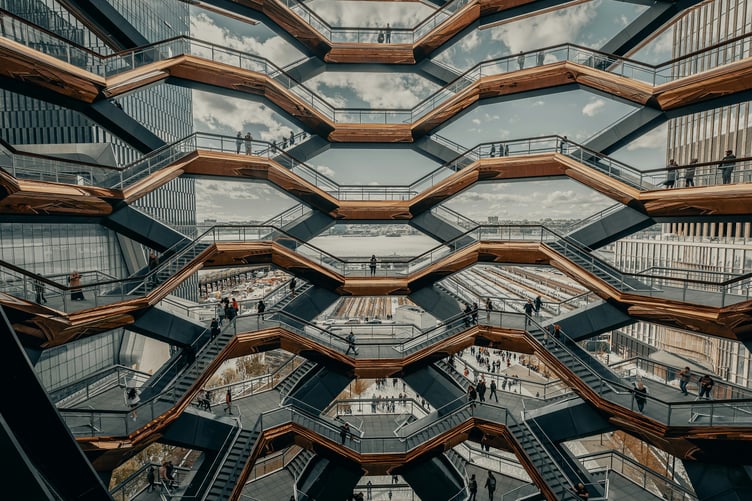
Hudson Yards
Learn More
Hudson Yards, located on the west side of Manhattan, is one of New York City's newest and most exciting neighborhoods. Built on the former rail yards, this ambitious development project has transformed the area into a thriving hub of residential, commercial, and cultural activity.
The centerpiece of Hudson Yards is the stunning architectural marvel known as The Vessel. This interactive sculpture, consisting of a network of staircases and platforms, offers breathtaking views of the surrounding skyline and has quickly become an iconic symbol of the neighborhood. Nearby, the newly opened Edge observation deck, perched atop the 100th floor of 30 Hudson Yards, provides visitors with unparalleled panoramic views of the city.
The neighborhood boasts an array of high-end shops, luxury boutiques, and fine dining establishments. The Hudson Yards Mall, featuring a wide selection of designer brands and department stores, is a shopper's paradise. For culinary enthusiasts, there are numerous world-class restaurants and trendy eateries to explore, offering diverse cuisines to suit every palate.
Hudson Yards also caters to the cultural and artistic interests of its residents and visitors. The Shed, a cutting-edge arts center, showcases a variety of performances, exhibitions, and events, spanning the realms of theater, music, dance, and visual arts. Nearby, the High Line, an elevated park built on a historic freight rail line, offers a serene escape amidst lush greenery, public art installations, and scenic views of the city.
With its sleek skyscrapers, luxurious residences, and vibrant mix of amenities, Hudson Yards has become a sought-after destination for living, working, and leisure in Manhattan. Its prime location, modern infrastructure, and dynamic atmosphere make it a neighborhood that continues to captivate both locals and tourists alike.
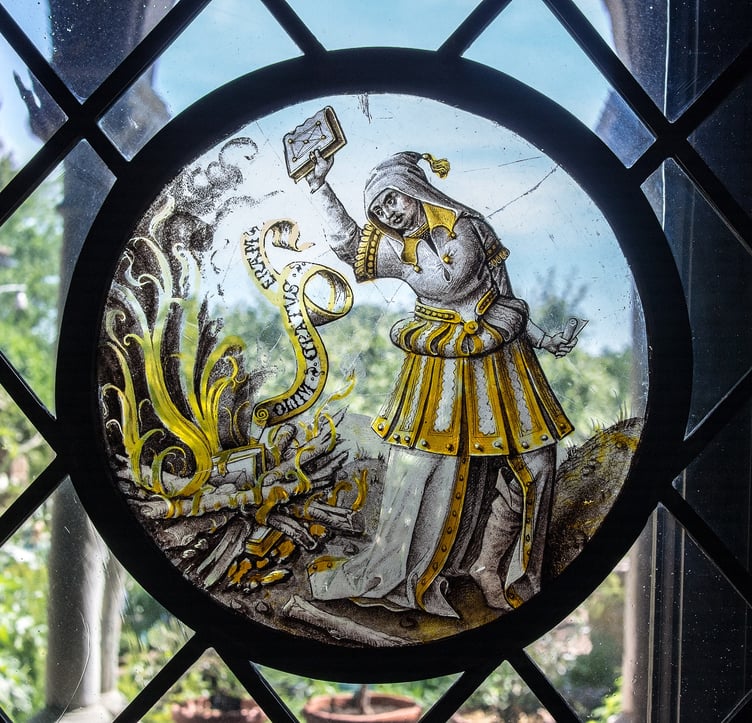
Inwood
Learn More
Inwood, Manhattan, is a vibrant and diverse neighborhood nestled at the northernmost tip of the borough. Boasting a rich history and unique character, it has become a beloved residential enclave for a wide range of residents, including families, artists, young professionals, and students. With its picturesque parks, diverse culinary scene, and cultural attractions, Inwood offers a charming blend of urban living and natural beauty.
One of the neighborhood's main draws is Inwood Hill Park, a sprawling green oasis that feels a world away from the bustling city. This massive park offers a variety of recreational activities, including hiking trails, ball fields, and waterfront views along the Hudson River. The adjacent Fort Tryon Park is home to the iconic Cloisters Museum, housing an extensive collection of medieval art and architecture.
Inwood's diverse community contributes to a vibrant tapestry of cultures and traditions. Along Broadway and Dyckman Street, residents and visitors can explore a diverse range of restaurants, cafes, and specialty shops, serving everything from Dominican cuisine to Mediterranean delicacies.
Housing in Inwood consists mainly of pre-war apartment buildings and historic brownstones, offering an appealing mix of affordability and accessibility to public transportation. While the neighborhood has experienced some gentrification over the years, it has managed to retain its unique identity and welcoming atmosphere.
Inwood's strong sense of community is evident in its numerous local events, such as street fairs, farmers' markets, and cultural celebrations. Residents also enjoy easy access to public transportation, with several subway lines and buses connecting the neighborhood to other parts of Manhattan and beyond.
All in all, Inwood Manhattan is a gem that offers a delightful blend of nature, culture, and community, making it a sought-after destination for those seeking a distinct urban experience with a touch of tranquility.

Kips Bay
Learn More
Kips Bay, located in the eastern part of Manhattan, is a diverse and dynamic neighborhood known for its residential charm, cultural attractions, and convenient amenities. With a mix of historic brownstones, modern high-rises, and pre-war buildings, Kips Bay offers a varied architectural landscape that accommodates a range of housing options.
The neighborhood is home to several prestigious medical institutions, including NYU Langone Medical Center and Bellevue Hospital, contributing to a vibrant and intellectual atmosphere. This proximity to healthcare facilities has also led to a growing community of medical professionals residing in the area.
Residents of Kips Bay enjoy a plethora of dining options, from trendy cafes to upscale restaurants, offering a diverse culinary experience. The neighborhood is also home to cultural gems like the Museum of Sex, providing a unique blend of entertainment and education.
The green spaces of Kips Bay are a welcome retreat from the urban hustle, with St. Vartan Park offering recreational facilities for residents to unwind. Additionally, the scenic East River Esplanade provides a picturesque waterfront for jogging or leisurely strolls.
Transportation is convenient, with access to various subway lines, making it easy for residents to navigate and explore other parts of Manhattan. Overall, Kips Bay strikes a balance between residential tranquility and urban vibrancy, making it an attractive and sought-after neighborhood in the heart of Manhattan.
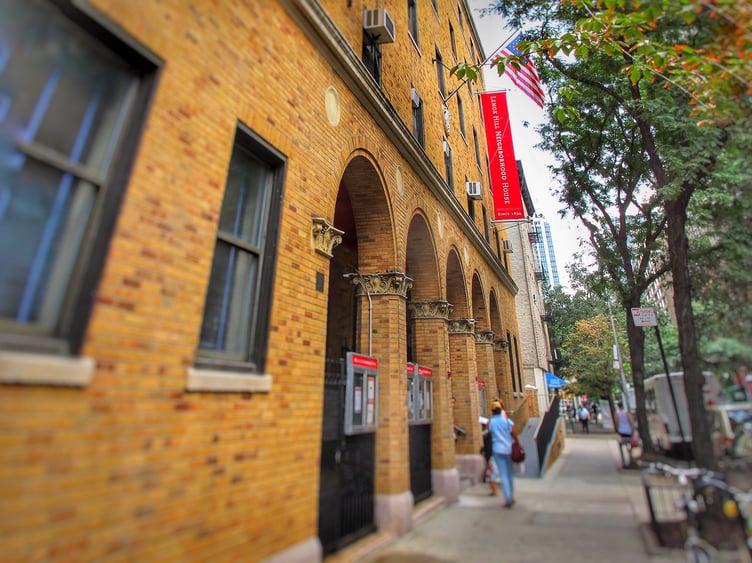
Lenox Hill
Learn More
Lenox Hill, located on the Upper East Side of Manhattan in New York City, is a vibrant and upscale neighborhood known for its sophisticated atmosphere and prime location. Characterized by tree-lined streets, elegant townhouses, and luxury high-rise buildings, Lenox Hill exudes a refined charm that attracts residents and visitors alike.
The neighborhood is home to renowned medical institutions, including the prestigious Lenox Hill Hospital, adding an element of health and wellness to the area. Residents benefit from proximity to Central Park, offering a green escape within walking distance. The park provides opportunities for outdoor activities, recreational sports, and leisurely strolls.
Lenox Hill is a cultural hub, featuring upscale boutiques, fine dining establishments, and art galleries. Madison Avenue, one of the world's premier shopping destinations, runs through the neighborhood, offering residents access to high-end fashion and designer stores. The culinary scene is diverse, with a range of restaurants offering international cuisines to satisfy discerning palates.
Transportation options are convenient, with access to subway lines, buses, and easy connectivity to other parts of the city. The neighborhood's central location allows for a quick commute to Midtown Manhattan and other business districts.
In summary, Lenox Hill is an affluent and culturally rich neighborhood, seamlessly blending upscale living, healthcare excellence, cultural amenities, and green spaces to create a coveted residential enclave on the Upper East Side.
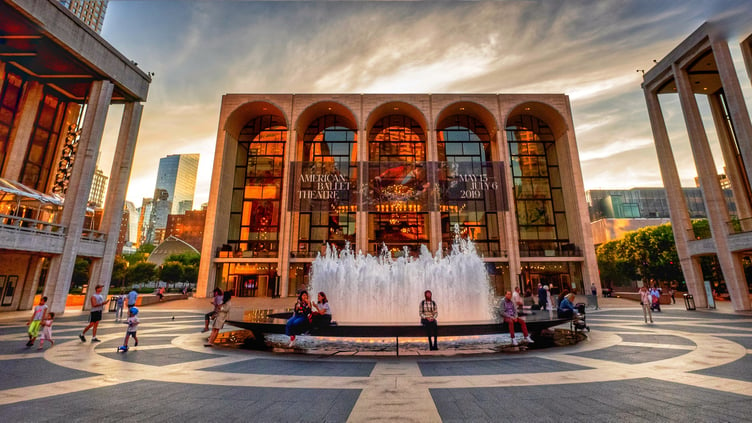
Lincoln Square
Learn More
Nestled on Manhattan's Upper West Side, Lincoln Square exudes a sophisticated charm, seamlessly blending cultural richness with contemporary allure. This vibrant neighborhood is anchored by the iconic Lincoln Center for the Performing Arts, a cultural nucleus hosting world-class performances in its opulent venues. The Lincoln Square skyline is punctuated by elegant residential towers and historic brownstones, creating an architectural tapestry that reflects both old-world charm and modern luxury.
A stroll along the wide, tree-lined streets reveals an array of culinary delights, from upscale bistros to quaint cafes offering diverse flavors that cater to every palate. Residents relish the proximity to Central Park, a verdant oasis that provides an escape from the urban hustle, offering a breath of fresh air and recreational opportunities.
Retail therapy finds a haven in the upscale boutiques and flagship stores that line Columbus Avenue, providing a shopping experience that ranges from high-end fashion to unique artisanal finds. The neighborhood's educational landscape is enriched by renowned institutions like Fordham University and the Fiorello H. LaGuardia High School of Music & Art and Performing Arts, contributing to a dynamic and intellectually stimulating atmosphere.
Lincoln Square is not just a residential enclave; it's a cultural crossroads where the past meets the present in perfect harmony. Whether attending a ballet at the Lincoln Center, enjoying a leisurely Sunday brunch in a charming cafe, or simply savoring the architectural grandeur on a casual walk, Lincoln Square beckons with a sophisticated rhythm that defines the heartbeat of Manhattan's Upper West Side.
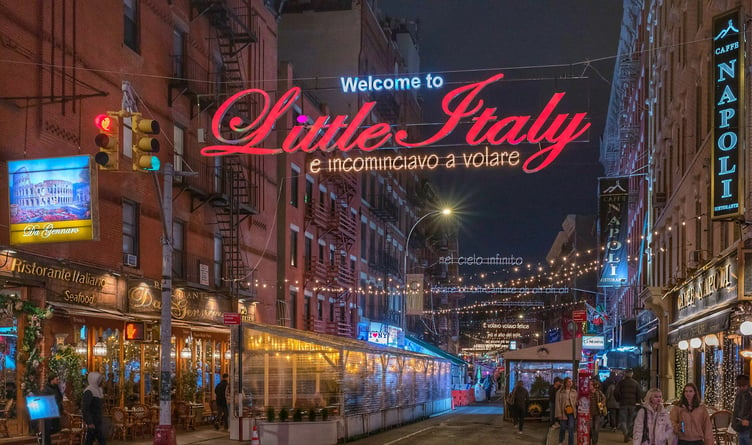
Little Italy
Learn More
Little Italy is a vibrant and historic neighborhood located in Lower Manhattan, New York City. Known for its rich Italian heritage, this charming enclave offers a unique blend of old-world charm and contemporary urban living.
Nestled between Chinatown and SoHo, Little Italy spans a few blocks along Mulberry Street, with its bustling sidewalks adorned with Italian flags and an array of inviting trattorias, cafes, and pastry shops. The neighborhood's authentic Italian cuisine is a major draw for locals and tourists alike, with popular dishes such as pizza, pasta, and cannoli satisfying even the most discerning palates.
While the Italian population has diminished over the years, Little Italy still maintains its cultural identity through annual events like the Feast of San Gennaro, a vibrant celebration of Italian culture and heritage. During the festival, the streets come alive with live music, parades, carnival games, and, of course, an abundance of mouth watering Italian delicacies.
Aside from its culinary delights, Little Italy is also home to charming boutiques and specialty shops, where visitors can find imported Italian goods, handmade crafts, and unique souvenirs. Art galleries, vintage shops, and trendy boutiques can be found in the neighboring SoHo district, just a stone's throw away.
Little Italy's central location provides easy access to other parts of Manhattan. Residents and visitors can enjoy a leisurely stroll to nearby attractions such as the historic Tenement Museum, the vibrant nightlife of the Lower East Side, or the shopping mecca of Canal Street. Moreover, excellent public transportation options, including subway lines and buses, make it convenient to explore the rest of the city.
Overall, Little Italy is a lively and culturally rich neighborhood that continues to honor its Italian roots while embracing the dynamic spirit of New York City.
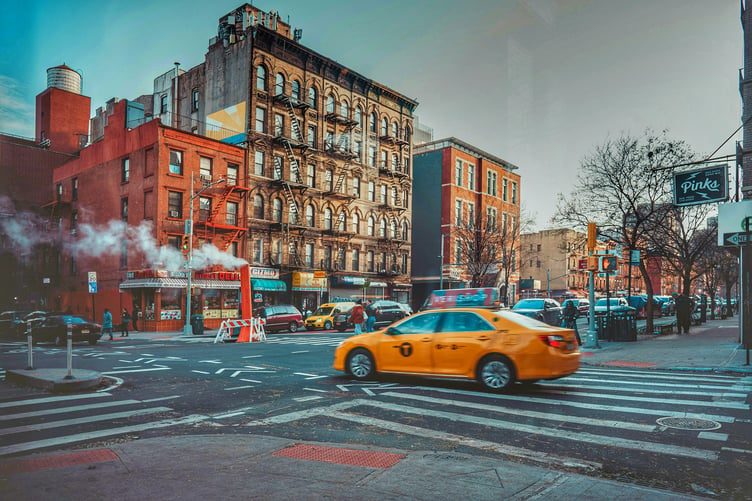
Lower East Side
Learn More
Lower East Side, located in Manhattan, New York City, is a vibrant and historically significant neighborhood that offers a diverse and exciting urban experience. Known for its rich immigrant history, artistic culture, and trendy atmosphere, the Lower East Side has undergone significant transformations over the years while still retaining its unique character.
The neighborhood is home to a wide range of residents, including young professionals, artists, and long-standing community members. Its dynamic mix of cultures is reflected in the numerous ethnic restaurants, shops, and markets that line the streets. Delving into the Lower East Side's culinary scene reveals a world of flavors, from traditional Jewish delis and Ukrainian pierogi joints to hip cafes and fusion eateries.
Art and culture thrive in the Lower East Side, with numerous galleries, music venues, and theaters scattered throughout the area. The neighborhood's artistic heritage is celebrated through events like the annual LES Art Week and the thriving street art scene that adorns its walls. Institutions like the Tenement Museum offer glimpses into the neighborhood's immigrant past, preserving the stories of those who shaped the area.
Parks and green spaces provide a welcome respite from the bustling city streets. The East River waterfront offers stunning views of the Manhattan skyline and opportunities for outdoor activities like jogging and biking. Sara D. Roosevelt Park is a local favorite, providing space for picnics, sports, and community gatherings.
Transportation in the Lower East Side is convenient, with subway lines and bus routes connecting residents to the rest of the city. The F, M, J, and Z subway lines serve the area, making it easy to access other neighborhoods and attractions.
Overall, the Lower East Side is an energetic and ever-evolving neighborhood that offers a vibrant blend of history, culture, and contemporary urban living.
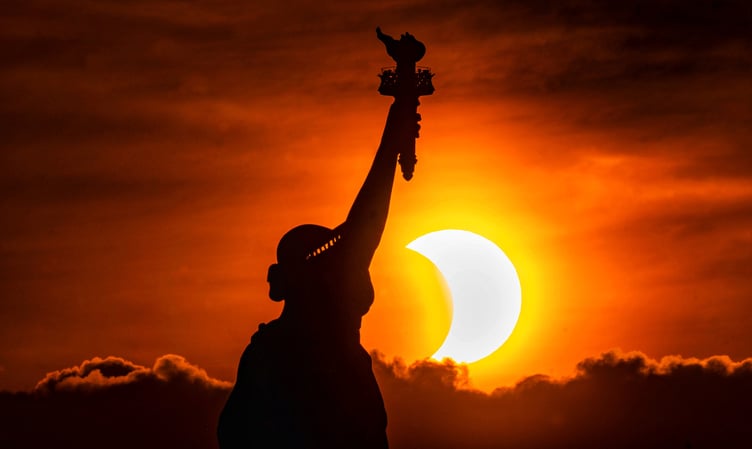
Manhattan
Learn More
Manhattan, the heart of New York City, is a dynamic and diverse borough that embodies the quintessential urban experience. It's a bustling island packed with iconic neighborhoods, each with its own unique character and charm.
Midtown: Known for its towering skyscrapers, Midtown is the city's commercial hub, home to landmarks like Times Square, Rockefeller Center, and the Theater District. It's a vibrant, 24/7 neighborhood that never sleeps.
Upper East Side: This affluent enclave offers a mix of luxury residences, renowned museums like the Metropolitan Museum of Art, and Central Park. It's an elegant, upscale area.
Upper West Side: A more residential counterpart to the Upper East Side, it's known for its beautiful brownstones, proximity to Central Park, and cultural gems like the American Museum of Natural History.
Downtown: Here, you'll find the Financial District, Wall Street, and the World Trade Center. It's the epitome of NYC's financial prowess and home to the powerful New York Stock Exchange.
Greenwich Village: A bohemian haven, Greenwich Village is famous for its historic streets, Washington Square Park, and the NYU campus. It's a hub of art, culture, and creativity.
Chelsea: Renowned for its art galleries and the High Line, Chelsea is a trendy, fashionable neighborhood with a lively arts scene.
Harlem: Rich in cultural heritage, Harlem offers a blend of history, music, and soul food. The Apollo Theater and Schomburg Center for Research in Black Culture are significant landmarks.
East Village: Known for its nightlife, eclectic eateries, and vibrant street art, the East Village is a youthful, edgy neighborhood.
Manhattan is a microcosm of the world, offering an array of experiences, cultures, and lifestyles, making it one of the most exciting places to live or visit in the world.
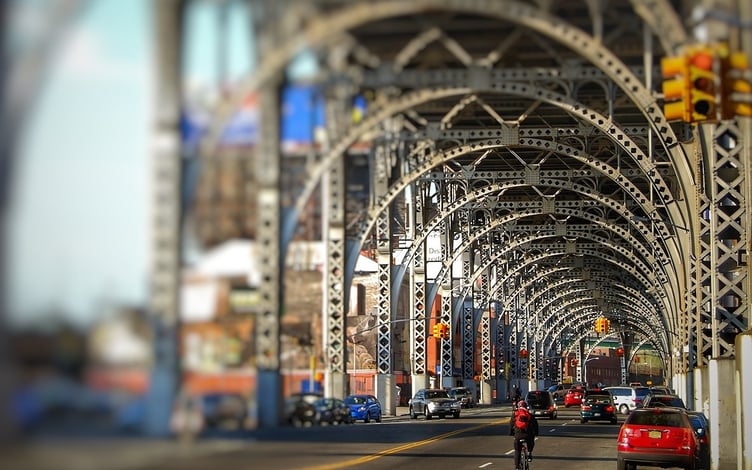
Manhattan Valley
Learn More
Manhattan Valley is a vibrant and diverse neighborhood located on the Upper West Side of Manhattan, New York City. Bounded by Central Park to the east and Riverside Park to the west, this residential enclave stretches from West 110th Street to West 96th Street, encompassing a mix of residential, commercial, and recreational spaces.
One of the defining features of Manhattan Valley is its diverse community, comprising people of various cultural backgrounds and income levels. This diversity is reflected in the array of restaurants, shops, and cultural establishments that line the streets. Residents can explore an assortment of cuisines, from trendy eateries to classic diners, offering a delightful culinary experience.
The neighborhood also benefits from its proximity to both Central Park and Riverside Park, providing ample opportunities for outdoor activities and recreation. Locals can enjoy jogging, picnicking, and attending various events and concerts hosted in the parks throughout the year.
Housing options in Manhattan Valley include pre-war brownstones, apartment buildings, and high-rise condos, accommodating a mix of families, young professionals, and students. The proximity to Columbia University attracts a significant student population, contributing to the area's vibrant and youthful atmosphere.
Public transportation is readily accessible, with numerous subway stations connecting residents to other parts of Manhattan and beyond. Commuting and getting around the city are made convenient through the extensive public transportation network.
While Manhattan Valley has undergone gentrification over the years, community efforts have been made to preserve its distinct character and affordability. The neighborhood's charm lies in its harmonious blend of old-world charm and contemporary urban living, making it an attractive place for those seeking a lively, diverse, and well-connected community in the heart of Manhattan.
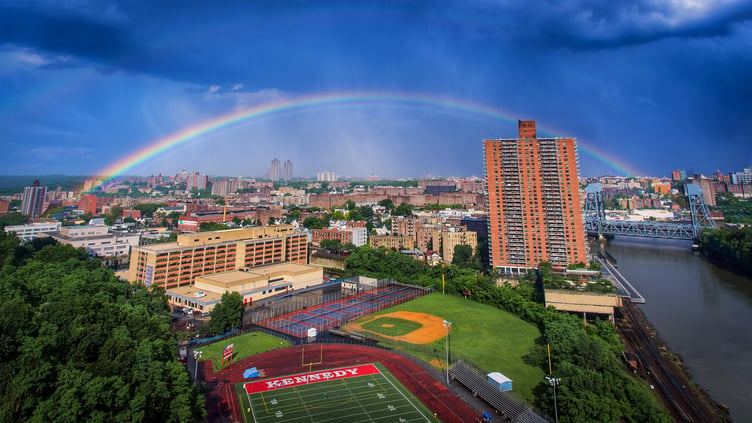
Marble Hill
Learn More
Marble Hill is a unique neighborhood nestled in the northernmost part of Manhattan, New York City. Separated from the mainland by the Harlem River Ship Canal, Marble Hill is technically part of the Bronx, but its history and character align it more closely with Manhattan. The area is primarily residential, featuring a mix of low-rise apartment buildings, townhouses, and some public housing developments.
One of Marble Hill's distinctive features is its topography. The neighborhood is situated on a marble plateau, hence its name, and offers residents scenic views of the Harlem River and surrounding green spaces. The Marble Hill Metro-North station provides convenient transportation options, connecting residents to various parts of Manhattan and the Bronx.
The community enjoys a diverse demographic makeup, contributing to a vibrant cultural atmosphere. Residents can explore a range of dining options, from local delis and cafes to international cuisine, reflecting the neighborhood's multicultural influences. Marble Hill's parks and recreational areas, such as Marble Hill Playground and Inwood Hill Park, offer ample opportunities for outdoor activities and relaxation.
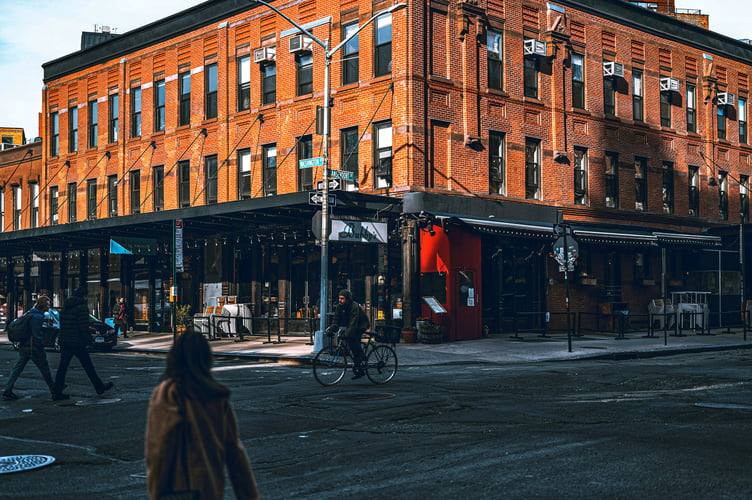
Meatpacking District
Learn More
Meatpacking District, located in the southern part of Manhattan, is a vibrant and dynamic neighborhood that seamlessly blends its industrial past with contemporary urban living. Once dominated by meatpacking warehouses and slaughterhouses in the 19th and early 20th centuries, the area has undergone a remarkable transformation in recent decades, evolving into a fashionable and trendy district.
The cobblestone streets of the Meatpacking District are now home to an eclectic mix of upscale boutiques, high-end restaurants, and art galleries. The Gansevoort Street Historic District, characterized by its distinctive architecture and historic buildings, adds a touch of old-world charm to the neighborhood. The High Line, a repurposed elevated railway track turned linear park, cuts through the district, offering residents and visitors a scenic escape from the bustling city streets.
Dining options in the Meatpacking District range from chic rooftop bars to renowned steakhouses, catering to a diverse array of tastes. The nightlife is equally vibrant, with trendy clubs and lounges that attract a fashionable crowd. The Whitney Museum of American Art, located at the intersection of the Meatpacking District and the High Line, is a cultural centerpiece, showcasing contemporary American art in a stunning architectural setting.
Despite its upscale ambiance, the Meatpacking District has managed to preserve a sense of authenticity, with remnants of its industrial past still visible in the architecture and street layout. The neighborhood's unique character, coupled with its strategic location and cultural amenities, makes it a sought-after destination for both residents and visitors seeking a blend of history, art, and modern urban living.

Midtown East
Learn More
Midtown East, situated in the heart of Manhattan, is a dynamic and iconic neighborhood that epitomizes the vibrancy of New York City. Known for its world-class architecture, upscale amenities, and bustling business district, Midtown East is a captivating blend of corporate sophistication and cosmopolitan charm.
Skyscrapers define the skyline, with landmarks such as the Chrysler Building and the United Nations Headquarters standing tall, showcasing the area's architectural prowess. The streets are lined with high-end boutiques, fine dining establishments, and luxury hotels, creating an atmosphere of elegance and refinement.
Grand Central Terminal, a transportation hub and architectural marvel, serves as a central focal point, connecting Midtown East to various parts of the city and beyond. The neighborhood also boasts cultural gems like the Museum of Modern Art (MoMA), offering a rich tapestry of artistic experiences.
Beyond the business facade, Midtown East caters to residents and visitors alike with its lush green spaces, including the historic Bryant Park, a haven for relaxation and outdoor events. The East River provides a scenic backdrop, and the iconic Roosevelt Island Tramway offers breathtaking views of the cityscape.
Midtown East is not only a hub for commerce but also a community where residents enjoy a sophisticated urban lifestyle. The blend of commerce, culture, and green spaces makes this neighborhood a compelling destination for those seeking a quintessential New York experience.
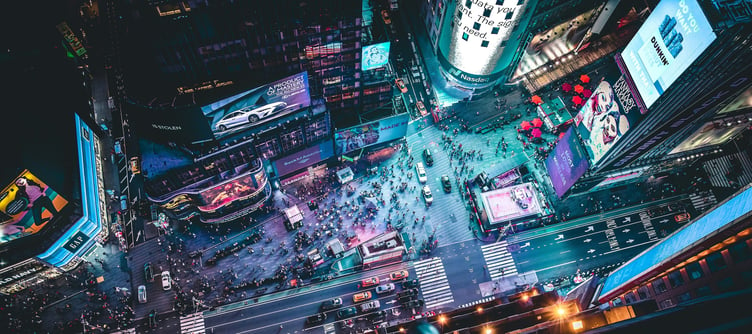
Midtown Manhattan
Learn More
Midtown Manhattan, located in the heart of New York City, is a bustling neighborhood that embodies the vibrant and dynamic spirit of the Big Apple. Stretching from 34th Street to 59th Street, and from the Hudson River to the East River, Midtown Manhattan is home to some of the city's most iconic landmarks, cultural institutions, and commercial centers.
The neighborhood boasts a mesmerizing skyline dominated by towering skyscrapers, including the Empire State Building, Rockefeller Center, and the Chrysler Building. Times Square, with its dazzling billboards and bustling crowds, is a focal point of Midtown and a symbol of the city's energy and excitement.
Midtown Manhattan is a hub for business, finance, and commerce. It is home to the headquarters of many global corporations and financial institutions, making it a vital economic center. The famous Fifth Avenue runs through the neighborhood, known for its luxury shops, high-end boutiques, and flagship stores of renowned brands.
Cultural enthusiasts flock to Midtown for its world-class museums and theaters. The Museum of Modern Art (MoMA) showcases an impressive collection of modern and contemporary art, while the nearby Theater District offers a multitude of Broadway shows and musicals. Carnegie Hall and Radio City Music Hall are iconic venues that host renowned performances throughout the year.
Green spaces like Central Park and Bryant Park provide a welcome respite from the urban jungle. Central Park, a sprawling oasis in the heart of the city, offers lakes, meadows, and recreational activities for residents and visitors alike. Bryant Park, located adjacent to the NYork Public Library, is a popular gathering spot with its seasonal events, outdoor seating, and a beautiful lawn.
With its vibrant mix of commerce, culture, and iconic landmarks, Midtown Manhattan encapsulates the quintessential New York City experience, attracting millions of visitors and serving as a thriving neighborhood for residents and businesses alike.

Midtown South
Learn More
Midtown South, located in the heart of Manhattan, New York City, is a vibrant and dynamic neighborhood that blends business, culture, and residential living. Bordered by Midtown to the north and Chelsea to the south, Midtown South encompasses several iconic neighborhoods, including Flatiron District, Gramercy Park, and NoMad (North of Madison Square Park).
Known for its architectural beauty, Midtown South is characterized by its iconic landmarks, such as the Flatiron Building, a triangular-shaped structure that has become an emblem of the neighborhood. The area is also home to Madison Square Park, a lush green space offering a respite from the bustling city streets.
Midtown South is a hub for creative industries, with numerous advertising agencies, design firms, and technology companies calling the neighborhood home. The area is also renowned for its diverse culinary scene, featuring an array of trendy restaurants, cafes, and food markets. Eataly, an Italian marketplace, is a popular destination for food enthusiasts, offering a wide variety of gourmet delights.
Residents and visitors alike can enjoy a multitude of cultural experiences in Midtown South. The neighborhood is host to numerous art galleries, museums, and theaters. The Museum of Sex, Rubin Museum of Art, and the renowned off-Broadway theater district are just a few of the attractions that draw art enthusiasts from around the city.
Transportation in Midtown South is convenient, with multiple subway lines providing easy access to the rest of Manhattan and beyond. The neighborhood also offers a lively nightlife scene, with trendy bars and clubs catering to a diverse range of tastes.
Overall, Midtown South is a thriving neighborhood that seamlessly blends commerce, culture, and community, making it an exciting place to live, work, and explore in the heart of New York City.

Midtown West
Learn More
Midtown West, also known as Hell's Kitchen, is a vibrant neighborhood located in the heart of Manhattan, New York City. With its central location and diverse character, Midtown West offers residents and visitors a unique blend of culture, entertainment, and convenience.
One of the defining features of Midtown West is its proximity to some of the city's most iconic landmarks. The neighborhood is home to Times Square, the "Crossroads of the World," where bright lights, billboards, and bustling crowds create an electrifying atmosphere day and night. Additionally, Midtown West is adjacent to the renowned Theater District, with Broadway shows and Off-Broadway productions attracting theater enthusiasts from around the globe.
Beyond its cultural attractions, Midtown West offers a wide array of dining options. From fine dining establishments to casual eateries, the neighborhood caters to all tastes and budgets. Ninth Avenue, known as Restaurant Row, is particularly famous for its diverse culinary scene, with a plethora of international cuisines to explore.
For outdoor enthusiasts, Midtown West provides access to several parks and green spaces. The Hudson River Park, stretching along the neighborhood's western border, offers scenic walking and cycling paths, as well as recreational facilities for sports and leisure activities.
In terms of transportation, Midtown West is well-connected to the rest of the city. The neighborhood is serviced by multiple subway lines and bus routes, making it easy to navigate and commute to other parts of Manhattan or beyond.
Overall, Midtown West is a dynamic neighborhood that seamlessly blends the excitement of city life with cultural landmarks, dining experiences, and recreational opportunities. Its central location and vibrant atmosphere make it a desirable place to live, work, and explore in the heart of New York City.
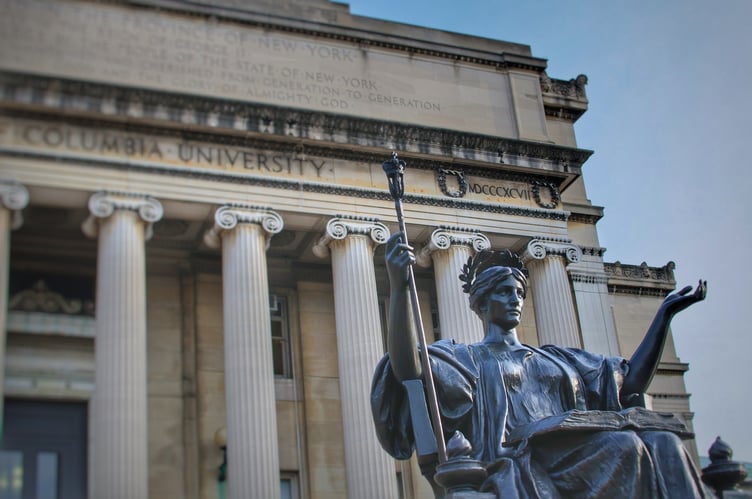
Morningside Heights
Learn More
Morningside Heights is a vibrant and diverse neighborhood located in the upper west side of Manhattan, New York City. Stretching from 110th Street to 125th Street, it is bordered by Morningside Park to the east and Riverside Park to the west. The neighborhood is primarily known for its prominent educational institutions, cultural landmarks, and lush green spaces, making it a popular destination for both residents and visitors.
At the heart of Morningside Heights is Columbia University, an Ivy League institution renowned for its academic excellence. The university's sprawling campus, with its iconic Low Library and Butler Library, gives the area a distinct college-town atmosphere. Nearby, Barnard College, Manhattan School of Music, and Union Theological Seminary contribute to the neighborhood's academic buzz.
Cultural attractions are abundant in Morningside Heights. The Riverside Church, with its impressive Gothic architecture and strong social justice legacy, stands as a prominent landmark. The Cathedral of St. John the Divine, one of the largest cathedrals in the world, hosts various events, concerts, and exhibitions throughout the year. The neighborhood also houses the acclaimed American Museum of Natural History, offering a captivating learning experience for all ages.
Morningside Heights boasts a diverse culinary scene, featuring restaurants, cafes, and eateries that cater to various tastes and budgets. From international cuisine to trendy brunch spots, residents can find an array of dining options to satisfy their palates.
Green spaces are abundant, providing a refreshing escape from the urban bustle. Morningside Park, with its picturesque landscapes and recreational facilities, offers a tranquil oasis for outdoor enthusiasts. Riverside Park, along the Hudson River, provides a scenic waterfront pathway perfect for jogging, cycling, or leisurely strolls.
The neighborhood's transportation network is well-developed, offering convenient access to other parts of Manhattan and beyond. With a mix of historic charm, academic energy, and cultural richness, Morningside Heights remains an attractive destination for residents seeking a lively and intellectually stimulating community.

Murray Hill
Learn More
Murray Hill, located in the heart of Manhattan, is a historic and vibrant neighborhood known for its unique blend of classic charm and modern amenities. Situated between East 34th Street and East 40th Street, Murray Hill offers a central location that provides residents with easy access to the city's key attractions.
Characterized by tree-lined streets and a mix of architectural styles, Murray Hill boasts a diverse community with a blend of brownstones, pre-war buildings, and contemporary high-rises. The neighborhood attracts a mix of young professionals, families, and students, creating a dynamic and lively atmosphere. One of the neighborhood's defining features is the iconic Grand Central Terminal, a major transportation hub that adds to the area's convenience.
Murray Hill is also renowned for its dining and nightlife scene. Residents can explore a variety of restaurants, ranging from trendy eateries to classic New York delis. The neighborhood's bars and pubs contribute to its social ambiance, making it a popular destination for those seeking entertainment after work or on weekends.
In addition to its social and cultural offerings, Murray Hill provides ample green spaces, including the scenic Bryant Park, offering a peaceful retreat from the urban hustle. The neighborhood's central location facilitates easy access to Midtown's business district, making it an ideal choice for professionals.
Overall, Murray Hill embodies a perfect balance of historic charm, modern conveniences, and a lively community spirit, making it a sought-after residential destination in Manhattan.
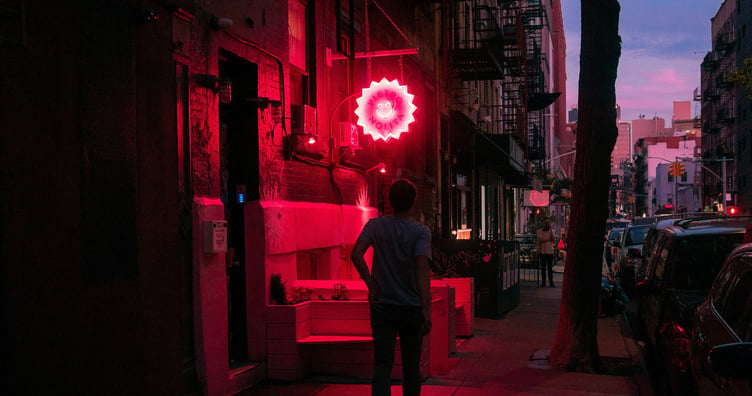
Nolita
Learn More
Nolita, short for "North of Little Italy," is a vibrant and eclectic neighborhood located in the heart of Manhattan, New York City. With its charming streets, historic buildings, and lively atmosphere, Nolita offers a unique blend of old-world charm and contemporary energy.
Known for its trendy boutiques, stylish cafes, and upscale restaurants, Nolita attracts a diverse mix of residents and visitors. The neighborhood is home to a thriving arts and fashion scene, with numerous galleries and designer shops showcasing the latest trends. The streets are often filled with fashion-forward individuals, creating a distinct atmosphere that is both chic and welcoming.
Nolita's architectural landscape is characterized by beautiful cast-iron buildings and historic brownstones, which add to its charm and character. The neighborhood's narrow streets are lined with trees, providing a serene and picturesque environment. Nolita also boasts several small parks and community gardens, offering residents a tranquil escape from the bustling city.
The culinary scene in Nolita is exceptional, with a wide array of dining options to suit every taste. From cozy cafes serving artisanal coffee to upscale restaurants offering innovative cuisine, food enthusiasts will find plenty to explore. The neighborhood is particularly renowned for its diverse selection of international eateries, including Italian, Japanese, Mexican, and more.
Nolita's central location makes it easily accessible to other parts of Manhattan and beyond. It is bordered by SoHo to the west, the Lower East Side to the east, and NoHo to the north. The neighborhood is well-served by public transportation, with several subway stations and bus routes in close proximity.
Overall, Nolita is a dynamic and trendy neighborhood that seamlessly blends history, culture, and modernity. Its lively streets, stylish boutiques, and culinary delights make it a vibrant destination for both residents and visitors seeking a quintessential New York City experience.

NoMad
Learn More
Nomad, short for North of Madison Square Park, is a vibrant and culturally rich neighborhood located in the heart of Manhattan, New York City. Bounded by East 25th Street to the south, East 30th Street to the north, Sixth Avenue to the west, and Madison Avenue to the east, Nomad seamlessly blends historic charm with modern sophistication.
One of the defining features of Nomad is its architectural diversity. Strolling through its tree-lined streets, one can witness a mix of Beaux-Arts buildings, elegant brownstones, and sleek modern structures. The neighborhood is also home to iconic landmarks like the Flatiron Building and the historic Madison Square Park, offering residents and visitors picturesque settings for leisure and relaxation.
Nomad has earned a reputation as a culinary hotspot, boasting an array of restaurants, cafes, and eateries that cater to diverse palates. From trendy rooftop bars with panoramic views of the city to cozy, hidden gems serving innovative cuisine, the dining options are as varied as the architecture. The neighborhood's food scene has become a magnet for food enthusiasts, drawing both locals and tourists alike.
In addition to its culinary offerings, Nomad is a shopping haven with high-end boutiques, chic fashion stores, and eclectic specialty shops. The area strikes a balance between luxury and accessibility, providing residents with a mix of designer flagship stores and unique, independent retailers.
Transportation in Nomad is convenient, with access to major subway lines, making it easy to navigate the rest of Manhattan and beyond. The neighborhood's central location ensures that cultural institutions, theaters, and entertainment venues are within reach, contributing to Nomad's dynamic and energetic atmosphere. Overall, Nomad is a dynamic and evolving neighborhood that caters to a diverse community, offering a blend of history, culture, and modern urban living.
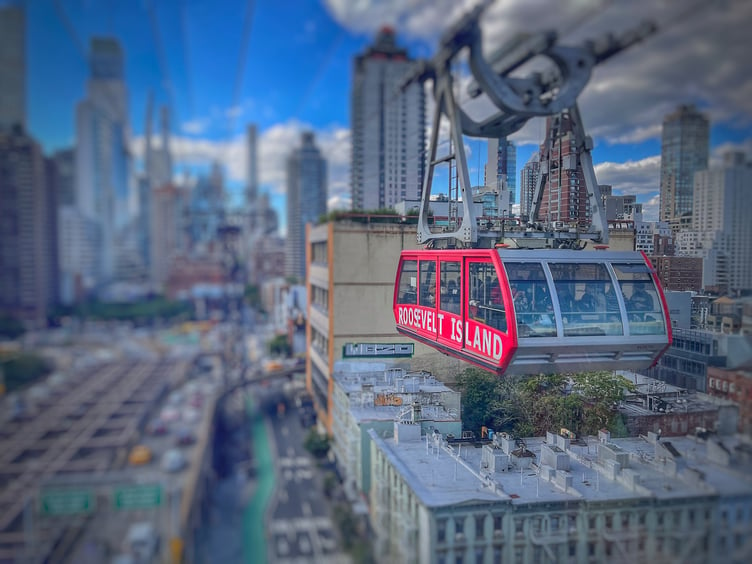
Roosevelt Island
Learn More
Roosevelt Island is a unique and vibrant neighborhood located in the East River between Manhattan and Queens. With a land area of only 147 acres, it offers a peaceful and close-knit community atmosphere, making it a sought-after residential destination in Manhattan.
One of the defining features of Roosevelt Island is its transportation system. The iconic Roosevelt Island Tramway connects the island to Manhattan, providing stunning views of the city skyline along the way. Residents also have access to the F train subway station, making commuting to other parts of the city convenient.
The neighborhood is characterized by its residential buildings, which range from high-rise luxury apartments to more affordable options. The diverse population includes families, professionals, and students, contributing to a multicultural and inclusive environment.
Roosevelt Island is home to several parks and recreational areas, offering residents ample opportunities for outdoor activities. The picturesque Franklin D. Roosevelt Four Freedoms Park is a popular destination, providing breathtaking views of the East River and showcasing a memorial to the 32nd President of the United States.
The neighborhood also boasts a variety of amenities and services. Main Street is the central commercial hub, featuring a range of shops, restaurants, and cafes. Residents can find everything they need within walking distance, including grocery stores, schools, healthcare facilities, and community centers.
Overall, Roosevelt Island offers a unique blend of tranquility and urban convenience. Its tight-knit community, stunning views, and easy access to Manhattan make it an attractive place to call home for those seeking a balance between city living and a peaceful retreat.

SoHo
Learn More
SoHo, short for "South of Houston Street," is a vibrant neighborhood located in the heart of Manhattan, New York City. Known for its artistic atmosphere and iconic cast-iron architecture, SoHo offers a unique blend of history, culture, and modernity.
One of the defining features of SoHo is its architecture. The neighborhood is characterized by its historic buildings with intricate cast-iron facades, which were originally used as textile factories and warehouses. Today, these buildings have been converted into trendy lofts, galleries, boutiques, and restaurants, giving SoHo its distinctive charm.
SoHo is renowned as a haven for artists, designers, and creative professionals. The neighborhood is home to numerous art galleries, showcasing contemporary and modern artwork. It also hosts the annual SoHo Arts Festival, where artists from all over the world come to exhibit their work. Walking through the cobblestone streets of SoHo, visitors can explore a diverse range of art, fashion, and design, making it a hub for inspiration and creativity.
In addition to its artistic scene, SoHo is a shopper's paradise. The neighborhood boasts an array of high-end boutiques, flagship stores, and designer outlets, featuring renowned brands and emerging designers. From fashion and jewelry to home decor and unique gifts, SoHo offers a wide range of shopping options to suit all tastes.
When it comes to dining, SoHo does not disappoint. The neighborhood is home to a plethora of restaurants, cafes, and bars, catering to all culinary preferences. Whether you're in the mood for fine dining, international cuisine, or casual street food, SoHo's diverse culinary scene has something for everyone.
Overall, SoHo is a lively and artistic neighborhood that effortlessly blends the old and the new. Its historic architecture, thriving art scene, fashionable boutiques, and culinary delights make it a must-visit destination for locals and tourists alike.
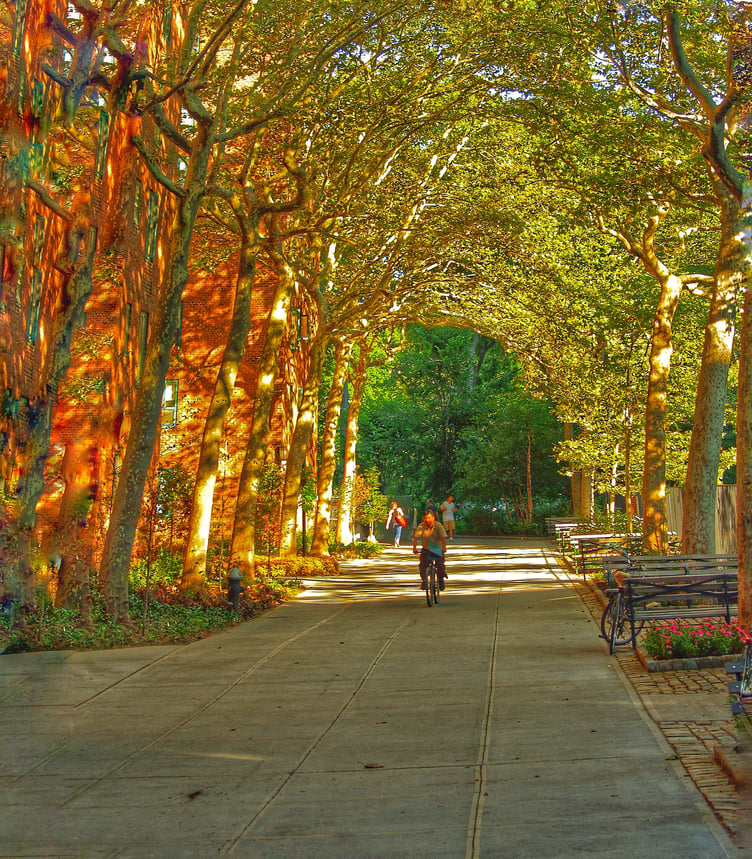
Stuyvesant Town
Learn More
Stuyvesant Town, located in the heart of Manhattan, is a historic residential enclave known for its vibrant community and distinct urban charm. Developed in the aftermath of World War II, this sprawling complex spans 80 acres and boasts a unique blend of residential and green spaces. Characterized by its red-brick buildings and tree-lined streets, Stuyvesant Town offers a tranquil escape from the bustling city.
The neighborhood is primarily residential, featuring a mix of rental apartments and townhouses. Stuyvesant Town is known for its sense of community, with residents often engaging in local events and activities. The Stuyvesant Oval, a central green space, serves as a focal point for gatherings and recreational pursuits. The neighborhood also provides easy access to nearby amenities, including restaurants, shops, and cultural attractions.
One of Stuyvesant Town's notable features is its commitment to green living. The community prioritizes sustainability with well-maintained parks, eco-friendly initiatives, and pedestrian-friendly streets. Residents can enjoy leisurely strolls through tree-lined pathways, fostering a sense of connection with nature in the midst of an urban landscape.
Transportation options are convenient, with nearby subway stations providing access to various parts of the city. The neighborhood's central location allows for easy exploration of Manhattan's diverse offerings, from iconic landmarks to cultural institutions. Stuyvesant Town stands as a testament to the enduring appeal of a close-knit community within the dynamic metropolis of New York City.
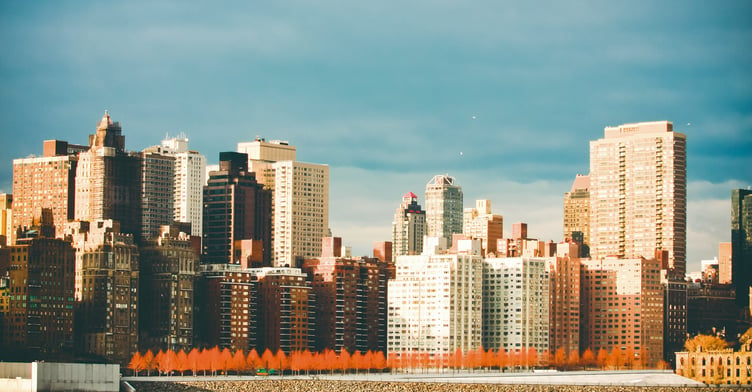
Sutton Place
Learn More
Sutton Place is a prestigious neighborhood nestled in the southern part of Manhattan, New York City. Known for its elegance, serenity, and exclusivity, Sutton Place offers a sophisticated residential experience for its affluent residents.
Characterized by tree-lined streets and luxurious townhouses, Sutton Place exudes a sense of tranquility rarely found in the bustling metropolis. The neighborhood's proximity to the East River allows some residences to enjoy stunning waterfront views, enhancing the overall appeal of the area.
Home to a mix of established professionals, wealthy families, and well-known personalities, Sutton Place boasts a tight-knit community where privacy and security are paramount. Residents often relish the quietude and privacy that this enclave provides, away from the tourist-heavy areas of Manhattan.
A notable feature of Sutton Place is its access to several parks and green spaces, providing locals with opportunities to escape the urban bustle and enjoy outdoor activities. One such green oasis is Sutton Place Park, a lovely waterfront park perfect for strolls, picnics, and recreational activities.
Convenient access to fine dining, upscale shopping, and cultural venues adds to the allure of living in Sutton Place. Nearby, residents can explore charming restaurants, boutique shops, and world-class museums and galleries, making it a desirable location for those seeking a refined lifestyle.
Transportation options are abundant, with numerous subway lines and bus routes connecting Sutton Place to the rest of Manhattan and beyond. This accessibility makes it easy for residents to commute to work or explore the city at their leisure.
In conclusion, Sutton Place's allure lies in its upscale and tranquil atmosphere, offering residents an escape from the frenetic pace of New York City while still being at the heart of it all. The neighborhood's rich history, stunning architecture, and proximity to amenities make it a coveted destination for those seeking an upscale and refined urban living experience.

Tribeca
Learn More
Tribeca, short for "Triangle Below Canal Street," is a vibrant and historic neighborhood located in Lower Manhattan, New York City. Known for its cobblestone streets, converted warehouses, and trendy atmosphere, Tribeca offers a unique blend of residential, commercial, and artistic elements.
Residentially, Tribeca is characterized by its luxurious loft apartments and upscale condominiums, attracting affluent residents who appreciate the neighborhood's charm and proximity to downtown Manhattan. The area is home to a mix of professionals, artists, and celebrities, lending an air of sophistication to the community.
Tribeca's culinary scene is a major draw for both locals and visitors. The neighborhood boasts a diverse range of restaurants, cafes, and bars, offering a wide array of cuisines and dining experiences. From high-end establishments helmed by renowned chefs to cozy neighborhood eateries, there is something to suit every palate.
In addition to its culinary delights, Tribeca is a hub for the arts. The neighborhood hosts the Tribeca Film Festival, an internationally acclaimed event that showcases a vast selection of films from around the world. The area also houses several art galleries, providing a platform for both established and emerging artists to showcase their work.
Tribeca's location provides easy access to other parts of Manhattan and beyond. With its proximity to major transportation hubs, such as the Chambers Street subway station and the Holland Tunnel, residents can easily navigate the city. Nearby attractions, including the iconic Brooklyn Bridge and Battery Park, offer opportunities for outdoor recreation and stunning views of the city skyline.
In summary, Tribeca is a thriving neighborhood that seamlessly blends its rich history with a contemporary and upscale lifestyle. From its architectural charm to its diverse culinary offerings and vibrant arts scene, Tribeca continues to be a highly sought-after destination for those seeking a sophisticated urban experience.
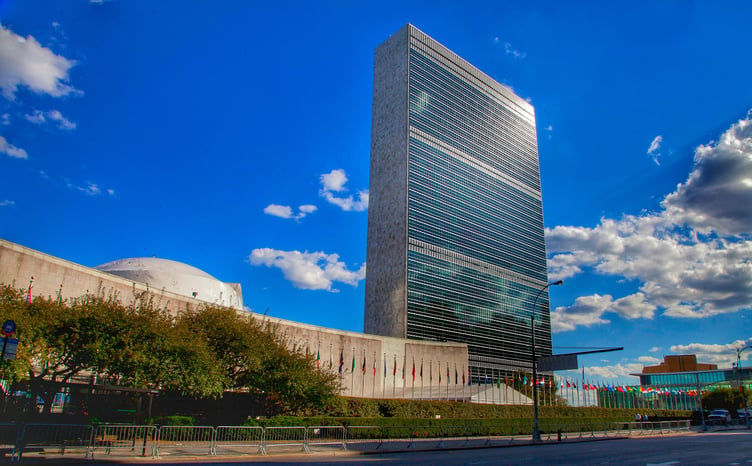
Turtle Bay
Learn More
Turtle Bay is a vibrant and historic neighborhood located in the Midtown East area of Manhattan, New York City. Known for its diverse mix of residential and commercial spaces, Turtle Bay offers a unique blend of tranquility and urban energy.
One of the standout features of Turtle Bay is its proximity to the United Nations headquarters, which lends an international flavor to the neighborhood. As a result, Turtle Bay is often frequented by diplomats, UN personnel, and visitors from around the world. The presence of the UN also contributes to a heightened sense of security and a well-maintained environment.
The neighborhood boasts a rich history, with charming tree-lined streets and a number of preserved brownstone townhouses. It offers a mix of architectural styles, ranging from pre-war buildings to modern high-rise apartments, providing diverse housing options.
Turtle Bay is also home to numerous cultural institutions and landmarks. The Japan Society and the Dag Hammarskjold Plaza are popular destinations for art enthusiasts and those seeking a taste of Japanese culture. Residents and visitors alike can enjoy the scenic East River Esplanade, offering stunning views of the river and the city skyline.
When it comes to dining and entertainment, Turtle Bay does not disappoint. The neighborhood offers a range of culinary experiences, from cozy neighborhood bistros to upscale dining establishments. The nightlife scene is equally diverse, with lively bars and lounges catering to different tastes and preferences.
In terms of transportation, Turtle Bay benefits from its central location. It enjoys easy access to major subway lines and is within walking distance of Midtown's business district, making it a convenient choice for commuters.
Overall, Turtle Bay offers a harmonious blend of history, culture, and convenience, making it a sought-after neighborhood for residents and visitors seeking a quintessential New York City experience.
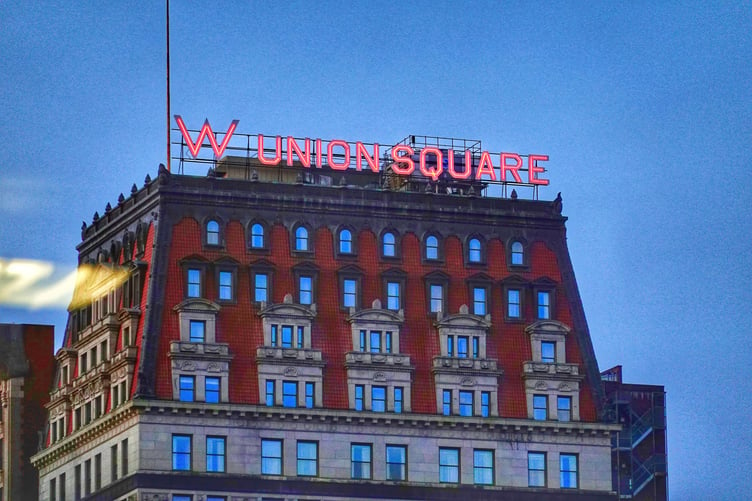
Union Square
Learn More
Union Square is a vibrant and iconic neighborhood nestled in the heart of Manhattan, New York City. Known for its bustling energy, diverse culture, and central location, Union Square is a magnet for locals and tourists alike. The neighborhood is characterized by its historic public square, Union Square Park, which serves as a communal hub for various activities.
Surrounded by a mix of commercial and residential spaces, Union Square boasts an eclectic atmosphere with a rich blend of retail shops, restaurants, and cultural venues. The area is a shopper's paradise, featuring flagship stores, boutiques, and specialty shops that cater to a wide range of tastes and preferences.
Culturally, Union Square is a melting pot, hosting numerous events, art installations, and performances throughout the year. The Union Square Greenmarket, a renowned farmers' market, draws crowds seeking fresh produce and artisanal goods. The neighborhood's proximity to renowned institutions like New York University contributes to its dynamic and youthful ambiance.
Transportation is convenient, with multiple subway lines converging at the Union Square subway station, providing easy access to other parts of the city. The Union Square neighborhood strikes a balance between the contemporary and the historic, with its architecture reflecting a mix of old and new.
In essence, Union Square is a dynamic urban oasis, offering a blend of commerce, culture, and community in the heart of one of the world's most iconic cities.
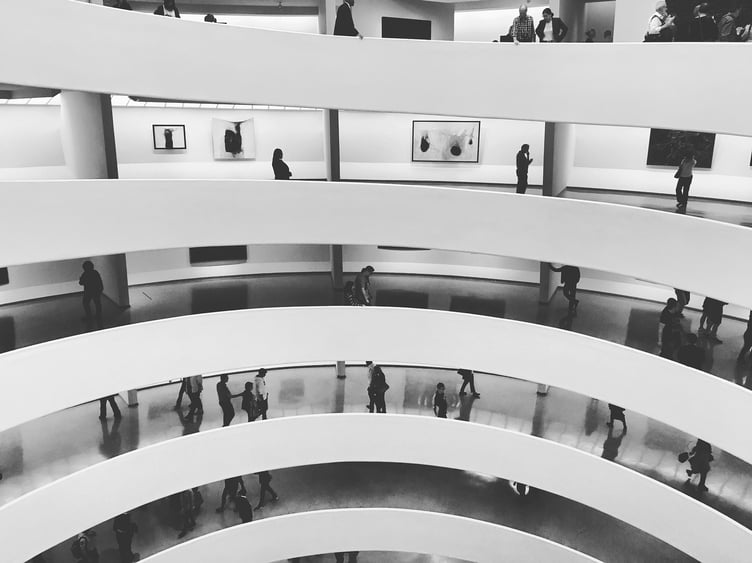
Upper Carnegie Hill
Learn More
Upper Carnegie Hill is a distinguished residential neighborhood located on the Upper East Side of Manhattan in New York City. Renowned for its affluence and cultural significance, this area boasts a mix of historic charm and modern amenities. Characterized by tree-lined streets and elegant townhouses, Upper Carnegie Hill offers a tranquil and sophisticated living environment.
The neighborhood is home to the prestigious Museum Mile, where world-class institutions such as the Metropolitan Museum of Art and the Guggenheim Museum attract art enthusiasts from around the globe. Central Park, with its scenic landscapes and recreational opportunities, is just a short stroll away, providing residents with a peaceful retreat in the heart of the city.
Upper Carnegie Hill also features upscale boutiques, fine dining establishments, and upscale grocery stores catering to the discerning tastes of its residents. The local schools, including renowned institutions like Dalton School and Spence School, contribute to the area's reputation for academic excellence.
Transportation is convenient, with easy access to public transit options, including buses and subway lines. The neighborhood exudes a sense of exclusivity and sophistication, making it a sought-after address for those seeking a refined urban lifestyle. Overall, Upper Carnegie Hill stands as a symbol of luxury, culture, and timeless elegance in the vibrant tapestry of New York City living.
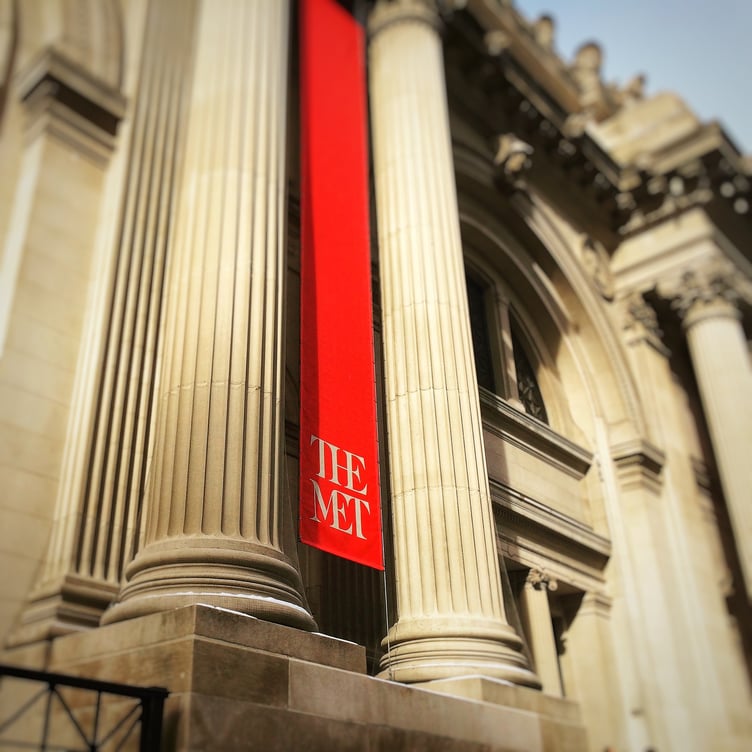
Upper East Side
Learn More
The Upper East Side is a prestigious and affluent neighborhood located in Manhattan, New York City. Known for its elegant residential buildings, upscale shopping destinations, and world-class cultural institutions, the Upper East Side exudes an air of sophistication and refinement.
Residentially, the Upper East Side is primarily composed of luxurious townhouses, high-end condominiums, and co-op apartments. The neighborhood attracts affluent residents who appreciate the proximity to Central Park, which offers a serene oasis amidst the urban hustle and bustle. The tree-lined streets are filled with beautiful architecture and well-maintained sidewalks, making it a pleasant area for strolling.
Madison Avenue and Fifth Avenue are renowned for their high-end boutiques, designer stores, and flagship stores of luxury brands. These avenues cater to the discerning fashionistas and shoppers seeking the latest trends and exclusive items. Additionally, the neighborhood offers a wide array of fine dining establishments, ranging from Michelin-starred restaurants to cozy cafes and trendy bars.
Cultural institutions like the Metropolitan Museum of Art, the Guggenheim Museum, and the Frick Collection contribute to the neighborhood's cultural allure. These world-class museums showcase priceless works of art and host various exhibitions, attracting art enthusiasts from around the globe. In addition, the Upper East Side is home to esteemed private schools, prestigious universities, and renowned medical institutions.
Overall, the Upper East Side embodies elegance, sophistication, and a refined lifestyle. It provides a mix of luxurious living, high-end shopping, exquisite dining, and cultural enrichment. With its central location, beautiful architecture, and access to premier amenities, the Upper East Side continues to be a coveted destination for those seeking an affluent and cultured residential experience in Manhattan.

Upper Manhattan
Learn More
Upper Manhattan is a vibrant and culturally rich area situated at the northern part of the island. Comprising neighborhoods such as Harlem, Washington Heights, and Inwood, this region boasts a diverse and dynamic community. Harlem, historically renowned for its role in the Harlem Renaissance, is a hub of artistic expression, with numerous theaters, jazz clubs, and cultural institutions. The neighborhood's iconic brownstone architecture and tree-lined streets contribute to its unique charm.
Moving north, Washington Heights is characterized by its hilly terrain and offers stunning views of the Hudson River. Known for its large Dominican population, the area is rich in Latin American culture and culinary delights. Inwood, at the northern tip, provides a more residential atmosphere with parks, including Inwood Hill Park, which offers a retreat into nature within the bustling city.
The neighborhood is well-connected with public transportation, including the A, B, C, and D subway lines, facilitating easy access to other parts of Manhattan. Residents and visitors can enjoy a variety of dining options, from soul food in Harlem to Dominican cuisine in Washington Heights. The cultural diversity is reflected in the numerous festivals, parades, and events that take place throughout the year. Overall, Upper Manhattan is a lively and evolving part of the city, where history, culture, and community converge to create a distinctive and vibrant urban experience.

Upper West Side
Learn More
The Upper West Side, a vibrant neighborhood in Manhattan, New York City, is renowned for its diverse culture, elegant brownstone-lined streets, and a mix of upscale and local establishments. Situated between Central Park and the Hudson River, the area spans from West 59th Street to West 110th Street, offering residents and visitors a captivating blend of natural beauty and urban sophistication.
Known for its affluent yet welcoming atmosphere, the Upper West Side boasts an array of historic landmarks and cultural institutions. Iconic landmarks such as the Dakota Building, made famous by its association with John Lennon, and the majestic Cathedral of St. John the Divine, the largest Gothic cathedral in the United States, add to the neighborhood's distinctive character.
Families and young professionals are drawn to the Upper West Side due to its excellent schools, safe streets, and an abundance of parks and playgrounds. Riverside Park, stretching along the Hudson River, provides a serene retreat for jogging, cycling, and relaxing amid lush greenery. Central Park, on the eastern border, offers countless recreational opportunities and is a haven for outdoor enthusiasts.
This neighborhood is a haven for culture aficionados, hosting several world-class performing arts venues such as the Lincoln Center for the Performing Arts, home to the Metropolitan Opera, the New York Philharmonic, and other renowned institutions. Additionally, the American Museum of Natural History captivates visitors with its captivating exhibits and scientific discoveries.
Culinary delights abound in the Upper West Side, with its mix of upscale restaurants, cozy cafes, and diverse eateries offering cuisine from around the world. Broadway and Amsterdam Avenues are popular dining destinations, showcasing the area's lively social scene.
The Upper West Side's accessibility is enhanced by its proximity to public transportation options, including subway lines and bus routes, ensuring convenient connections to other parts of Manhattan and beyond. With its rich history, cultural gems, and lively community spirit, the Upper West Side continues to be a cherished and sought-after destination for those seeking an authentic Manhattan experience.
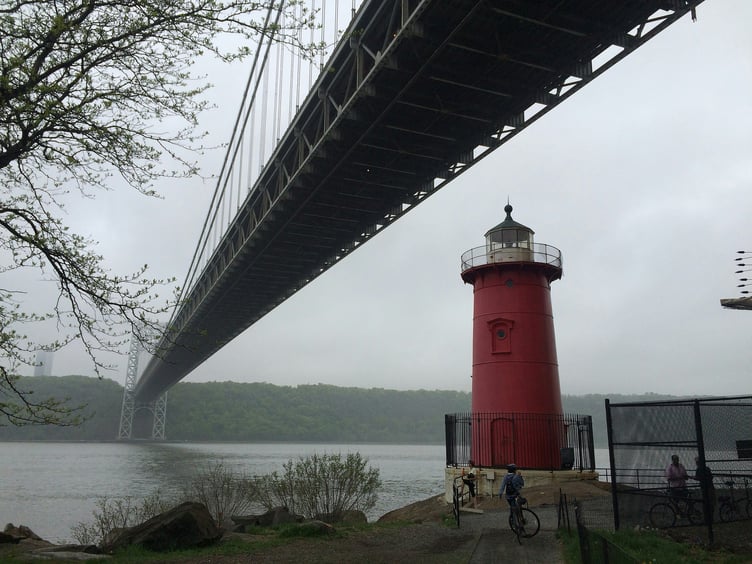
Washington Heights
Learn More
Washington Heights is a vibrant and culturally rich neighborhood located in the northernmost part of Manhattan, New York City. Stretching from 155th Street to 190th Street, bordered by the Hudson River to the west and Harlem River to the east, this diverse and historic area is known for its unique charm, dynamic community, and strong Latinx influence.
The neighborhood's architecture is a mix of pre-war buildings, historic brownstones, and some modern developments, creating a charming and eclectic streetscape. Washington Heights is steeped in history, evident in landmarks such as The Morris-Jumel Mansion, Manhattan's oldest house, which offers a glimpse into the area's colonial past.
One of the neighborhood's biggest draws is Fort Tryon Park, an expansive green oasis featuring lush gardens, walking paths, and stunning views of the Hudson River. Within the park is The Cloisters, a branch of the Metropolitan Museum of Art dedicated to medieval European art, offering visitors an enchanting cultural experience.
Washington Heights has a strong Latinx identity, with a large Dominican population that has influenced the area's vibrant food scene, with numerous local eateries offering authentic Caribbean and Latin American cuisine. Strolling along 181st Street, one can find an array of restaurants, bodegas, and lively street vendors selling delicious empanadas and other treats.
The neighborhood's sense of community is palpable, with various community events, festivals, and markets taking place throughout the year. Residents also enjoy a variety of recreational opportunities, including sports leagues, yoga studios, and community centers.
Although Washington Heights has undergone some gentrification in recent years, it remains a place where people from different backgrounds come together to celebrate their heritage, shaping the neighborhood's unique character and spirit. With its rich history, diverse community, and cultural offerings, Washington Heights continues to be a vibrant and sought-after destination in Manhattan.

West Harlem
Learn More
West Harlem, situated in the northern part of Manhattan, is a vibrant and culturally rich neighborhood that has undergone significant transformation in recent years. Bordered by the Hudson River to the west, Morningside Heights to the south, and Hamilton Heights to the north, West Harlem has become a magnet for residents and businesses seeking a unique blend of history and modernity.
One of the defining features of West Harlem is its diverse and dynamic community. The neighborhood is known for its cultural institutions such as the Apollo Theater, a historic venue that has hosted legendary performances by African American artists. The area is also home to Columbia University's Morningside Heights campus, contributing to a lively academic atmosphere. Residents and visitors can explore the numerous art galleries, theaters, and music venues that dot the landscape, fostering a sense of creativity and expression.
West Harlem's architectural landscape is a mix of historic brownstones and pre-war buildings, reflecting its rich history. Striking a balance between preserving its cultural heritage and embracing contemporary development, the neighborhood has seen an influx of new restaurants, cafes, and boutiques, adding a modern flair to its streets.
Transportation in West Harlem is convenient, with access to multiple subway lines and bus routes. The proximity to parks such as Riverside Park and Morningside Park provides residents with green spaces for recreation and relaxation. As West Harlem continues to evolve, it remains a captivating destination, offering a blend of history, culture, and urban vitality.

West Village
Learn More
The West Village, located in Manhattan, New York City, is a vibrant and historic neighborhood that effortlessly blends old-world charm with a lively and contemporary atmosphere. With its tree-lined streets, quaint brownstones, and picturesque townhouses, the West Village is renowned for its architectural beauty and welcoming ambiance.
One of the neighborhood's defining features is its vibrant artistic and cultural scene. The West Village is home to numerous theaters, art galleries, and performance spaces, attracting both established and emerging artists. Residents and visitors can enjoy a wide range of theatrical performances, art exhibitions, and live music shows throughout the year.
In addition to its cultural offerings, the West Village boasts a diverse culinary landscape. The neighborhood is a haven for food lovers, with a plethora of restaurants, cafes, and bakeries serving an array of international cuisines and culinary delights. From cozy neighborhood bistros to trendy eateries, there is something to suit every palate.
The West Village also offers plenty of green spaces and parks, providing residents with a refreshing retreat from the hustle and bustle of city life. Washington Square Park, with its iconic arch and vibrant atmosphere, is a popular gathering spot for locals and tourists alike. The High Line, a unique elevated park built on a historic freight rail line, offers stunning views of the city skyline and a tranquil oasis for leisurely walks.
With its central location, the West Village provides easy access to other parts of Manhattan and beyond. Residents enjoy convenient transportation options, including subway lines and bus routes, making it simple to explore the city and beyond.
Overall, the West Village is a dynamic and desirable neighborhood that offers a perfect blend of history, culture, and charm. Its unique character and vibrant community make it a sought-after destination for residents and visitors alike.
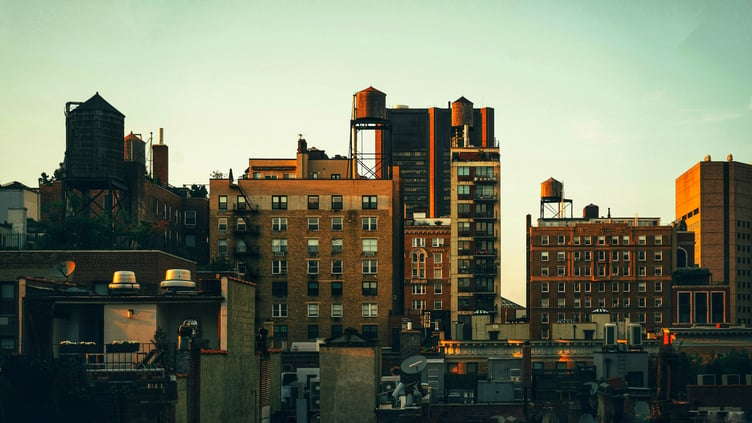
Yorkville
Learn More
Yorkville is a vibrant and upscale neighborhood located on the Upper East Side of Manhattan, New York City. Known for its mix of old-world charm and modern sophistication, Yorkville offers a unique living experience that attracts residents from diverse backgrounds.
The neighborhood's tree-lined streets are lined with beautiful brownstone buildings and luxurious high-rise apartments, creating an appealing blend of architectural styles. Residents here enjoy a mix of tranquility and city buzz, with quiet residential blocks and bustling commercial avenues. Third Avenue and Second Avenue are the primary commercial strips, brimming with an array of trendy boutiques, gourmet restaurants, cozy cafes, and high-end shops that cater to the sophisticated tastes of the local community.
Yorkville also boasts access to several green spaces, including the scenic Carl Schurz Park along the East River, where locals can enjoy strolls, picnics, and stunning views of the water. The neighborhood's proximity to Central Park adds to its allure, providing more opportunities for outdoor recreation, cultural events, and leisure activities.
The area is well-connected by public transportation, with multiple subway lines and bus routes making it easy to commute to other parts of Manhattan and beyond. Additionally, the Second Avenue Subway line, completed in recent years, has significantly improved transportation options for residents.
Educational facilities in Yorkville are top-notch, with renowned public and private schools serving the community. Families and young professionals find the neighborhood particularly appealing due to its safe and family-friendly atmosphere.
In summary, Yorkville Manhattan offers an upscale and sophisticated living experience with a charming mix of classic and modern elements. Its picturesque streets, thriving commercial scene, ample green spaces, and excellent amenities make it an attractive destination for those seeking the best of Manhattan living.
Queens

Astoria
Learn More
Astoria is a vibrant neighborhood located in the western part of Queens, New York City. Known for its diverse population and rich cultural heritage, Astoria offers a unique blend of old-world charm and modern amenities. With a population that includes people from various ethnic backgrounds, the neighborhood has a rich tapestry of cultural traditions and culinary delights.
Astoria is renowned for its Greek heritage, with numerous Greek restaurants, cafes, and specialty stores lining the streets. Visitors can indulge in authentic Greek cuisine and experience the lively atmosphere of the annual Greek Festival held in the neighborhood. In addition to its Greek influence, Astoria also showcases a diverse range of culinary options, including Middle Eastern, Italian, Balkan, and Asian cuisines.
The neighborhood is home to beautiful residential streets adorned with charming brownstone buildings, as well as modern apartment complexes. Astoria Park, a popular recreational spot, provides stunning views of the Manhattan skyline and offers a wide range of outdoor activities such as jogging, picnicking, and tennis. The waterfront area is another highlight, with scenic walking paths and breathtaking sunset views.
Astoria is well-connected to the rest of the city by public transportation, with several subway lines and bus routes serving the area. This makes it convenient for residents to commute to other parts of Queens or Manhattan.
The neighborhood also boasts a vibrant arts and entertainment scene. The Museum of the Moving Image showcases the history of film and television, while the Kaufman Astoria Studios is a major hub for film and television production.
In summary, Astoria is a diverse and lively neighborhood in Queens that offers a mix of cultural experiences, culinary delights, beautiful parks, and convenient transportation options. Its unique character and rich history make it a vibrant and desirable place to live or visit.

Bayside
Learn More
Bayside, located in the northeastern part of Queens, New York, is a vibrant and diverse neighborhood that offers a mix of residential, commercial, and recreational opportunities. Known for its suburban charm and proximity to waterfront areas, Bayside attracts residents who appreciate a quieter and more laid-back atmosphere compared to the hustle and bustle of Manhattan.
One of the defining features of Bayside is its picturesque coastline along the Long Island Sound. Residents and visitors can enjoy scenic views, waterfront parks, and recreational activities such as boating, fishing, and picnicking. Fort Totten Park, a former military base turned public park, is a popular destination featuring hiking trails, playgrounds, and historic buildings.
The neighborhood's residential areas are characterized by tree-lined streets and a mix of architectural styles, including colonial, Tudor, and contemporary homes. Bayside offers a range of housing options, from single-family houses to apartments and condominiums, accommodating diverse lifestyles and budgets.
Bell Boulevard serves as the main commercial hub of Bayside, offering a wide array of restaurants, cafes, bars, and shops. The neighborhood boasts a diverse culinary scene, with a variety of cuisines to satisfy any palate. Additionally, the Bay Terrace Shopping Center provides residents with a convenient destination for retail therapy, featuring a mix of popular national retailers.
Bayside is also home to several excellent schools, making it an attractive choice for families. The neighborhood is served by the New York City public school system, as well as private and parochial schools, ensuring a range of educational options for children of all ages.
With its suburban appeal, waterfront beauty, and convenient amenities, Bayside Queens continues to be a sought-after neighborhood for those seeking a tranquil yet vibrant place to call home.

Flushing
Learn More
Flushing, Queens, is a bustling and diverse neighborhood located in the eastern part of the borough. With its rich cultural heritage, vibrant street life, and culinary offerings, Flushing has become a vibrant hub for residents and visitors alike.
Known as one of the largest Chinatowns in New York City, Flushing showcases a vibrant Asian community. The streets are lined with an array of Asian markets, grocery stores, and specialty shops, offering a wide variety of fresh produce, spices, and traditional ingredients. The neighborhood is a haven for food lovers, with countless restaurants serving authentic Chinese, Korean, Japanese, and Taiwanese cuisine. From dim sum and hot pot to noodles and BBQ, Flushing offers a diverse culinary experience that attracts food enthusiasts from all over the city.
Flushing is also a cultural destination, with notable landmarks and institutions. Flushing Town Hall, a historic venue, hosts art exhibitions, live performances, and cultural events that celebrate the neighborhood's diversity. The Queens Botanical Garden, with its beautiful landscapes and educational programs, offers a tranquil retreat within the bustling neighborhood. Additionally, the Flushing Meadows-Corona Park, home to the iconic Unisphere and the New York Hall of Science, provides ample space for outdoor activities, sports, and recreational events.
Transportation in Flushing is well-connected, with the Flushing-Main Street station serving as a major transportation hub. The station provides access to the 7 train, which offers direct links to Manhattan and other parts of Queens. Buses and highways also provide convenient transportation options for commuters and residents.
Flushing's diverse community, vibrant atmosphere, and rich cultural offerings make it a captivating neighborhood to explore. It is a melting pot of different cultures, offering a taste of Asia alongside a vibrant local scene, making it a must-visit destination in Queens.

Forest Hills
Learn More
Forest Hills is a charming neighborhood located in the borough of Queens, New York City. Known for its tree-lined streets, beautiful homes, and vibrant community, Forest Hills offers a mix of residential tranquility and urban amenities.
One of the defining features of Forest Hills is its lush green spaces. The neighborhood is home to Forest Hills Gardens, a private community with meticulously landscaped gardens, Tudor-style houses, and a serene atmosphere. The area also boasts the expansive Forest Park, offering residents a place to relax, exercise, and enjoy nature. With its hiking trails, sports fields, golf course, and the historic Forest Park Carousel, there's always something to do for outdoor enthusiasts.
Forest Hills is also renowned for its cultural and entertainment offerings. The neighborhood is home to the iconic Forest Hills Stadium, which has hosted numerous concerts and events featuring renowned artists. The bustling Austin Street serves as the neighborhood's main commercial hub, with a wide array of shops, restaurants, and cafes catering to diverse tastes and preferences.
For families, Forest Hills offers excellent educational opportunities, with top-rated public and private schools in the area. The neighborhood is also well-connected, with several subway and bus lines providing convenient transportation options to Manhattan and other parts of Queens.
In terms of community spirit, Forest Hills residents take pride in their neighborhood and actively participate in local events and initiatives. From street fairs to farmers markets, there's always a sense of togetherness and a strong neighborhood identity.
Overall, Forest Hills Queens offers a blend of natural beauty, cultural richness, and a close-knit community, making it an appealing place to call home for individuals and families alike.

Long Island City
Learn More
Long Island City (LIC) is a vibrant and rapidly evolving neighborhood located in the westernmost part of Queens, New York. Known for its industrial past and thriving arts scene, LIC has undergone significant transformation in recent years, becoming a sought-after destination for residents and visitors alike.
LIC is characterized by its stunning waterfront views, with the East River offering breathtaking panoramas of the Manhattan skyline. Gantry Plaza State Park, a popular gathering spot, provides ample green space, jogging paths, and piers for recreational activities. The park also hosts outdoor events and art installations, adding to the neighborhood's cultural appeal.
The neighborhood is a hub for creativity and innovation, with numerous art galleries, studios, and cultural institutions dotting the landscape. The Museum of Modern Art PS1, located in a repurposed public school building, showcases contemporary art and hosts cutting-edge exhibitions and events. LIC is also home to many artists' lofts and creative workspaces, fostering a vibrant and eclectic arts community.
In recent years, LIC has experienced a boom in residential and commercial development. The neighborhood boasts a mix of sleek high-rise luxury apartments, converted warehouses, and historic brownstones, attracting a diverse population. This influx of new residents has led to a surge in trendy restaurants, cafes, and bars, catering to a wide range of culinary preferences.
Transportation options in LIC are excellent, with several subway lines, including the 7, E, M, G, and N trains, providing easy access to Manhattan and other parts of Queens. Additionally, the neighborhood is serviced by various bus routes and offers bike lanes for cyclists.
Overall, LIC offers a unique blend of artistic flair, urban convenience, and breathtaking views, making it a dynamic and desirable neighborhood to call home.
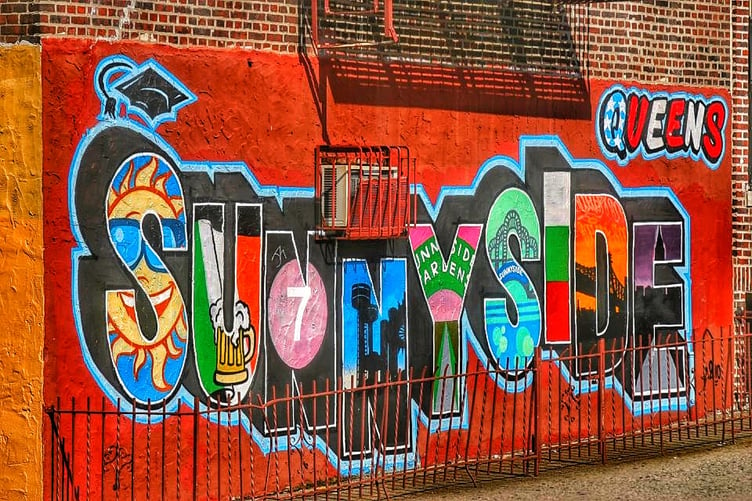
Sunnyside
Learn More
Sunnyside, located in the borough of Queens, New York City, is a vibrant and diverse neighborhood with a rich history and a strong sense of community. Nestled between Long Island City and Woodside, Sunnyside offers a mix of residential and commercial areas, making it a desirable place to live and visit.
One of the defining features of Sunnyside is its tree-lined streets and charming pre-war buildings. The neighborhood has a peaceful and relaxed atmosphere, which attracts families, young professionals, and artists alike. Sunnyside Gardens, a planned community developed in the 1920s, is a notable residential area with beautiful gardens and a cooperative housing model.
The neighborhood is known for its diversity, with residents from various cultural backgrounds. This is reflected in the range of cuisines available, from traditional Irish pubs to Latin American eateries and Asian fusion restaurants. Sunnyside also hosts an annual multicultural festival that celebrates the neighborhood's diversity through music, dance, and food.
Transportation in Sunnyside is convenient, with multiple subway lines (7, M, and R) providing easy access to Manhattan and other parts of Queens. The neighborhood is also well-served by buses and has convenient access to major highways.
Sunnyside is home to several parks and recreational facilities, offering residents ample opportunities for outdoor activities. Skillman Playground and Windmuller Park are popular spots for families and sports enthusiasts, while Sunnyside Gardens Park provides a peaceful retreat with its community gardens.
In summary, Sunnyside is a welcoming and diverse neighborhood with a strong sense of community. Its tree-lined streets, cultural diversity, and convenient location make it an attractive place to call home in Queens.
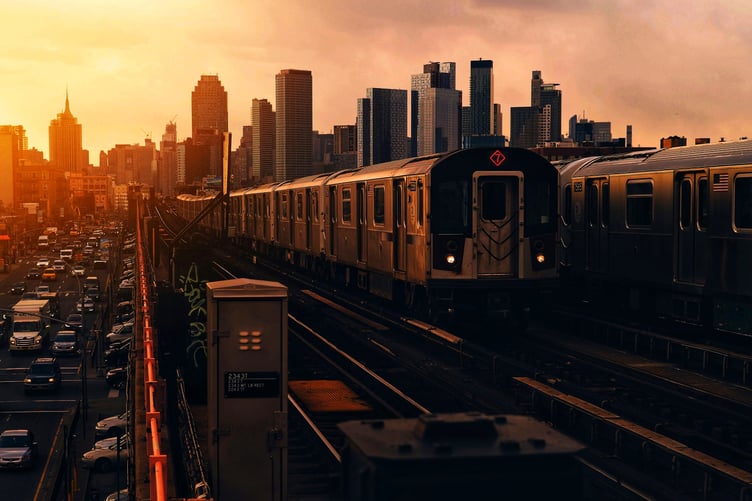
Woodside
Learn More
Woodside is a vibrant neighborhood located in the borough of Queens, New York City. With a rich cultural heritage and a diverse population, Woodside offers a unique blend of residential charm and urban convenience. Spanning approximately 250 words, here's a neighborhood summary for Woodside:
Nestled in the northwestern part of Queens, Woodside is a neighborhood known for its welcoming atmosphere and tight-knit community. It is bordered by Sunnyside to the east, Maspeth to the north, and Elmhurst to the south. The area is conveniently connected to Manhattan and other parts of the city through several subway lines, making it an ideal location for commuters.
Woodside is characterized by its tree-lined streets, historic brownstones, and a mix of residential and commercial areas. The neighborhood has a diverse population, with a strong Irish heritage that is reflected in its pubs and restaurants. In recent years, Woodside has also seen an influx of immigrants from various countries, adding to its cultural vibrancy.
Residents and visitors alike can enjoy a wide range of amenities in Woodside. The neighborhood is home to several parks and green spaces, including the expansive Windmuller Park, which offers recreational facilities such as playgrounds, sports fields, and picnic areas. Skillman Avenue and Roosevelt Avenue are the main commercial corridors, lined with a variety of shops, restaurants, and bars, offering diverse cuisines and vibrant nightlife options.
Woodside also boasts a strong sense of community with active civic and cultural organizations. The annual St. Patrick's Day Parade is a highlight of the neighborhood, attracting locals and visitors from across the city. The local schools in Woodside are known for their quality education, making it an appealing choice for families.
In conclusion, Woodside is a charming neighborhood in Queens that offers a unique mix of residential tranquility, cultural diversity, and convenient urban living. With its strong sense of community, abundant amenities, and easy access to transportation, Woodside continues to be a desirable place to live, work, and explore.
